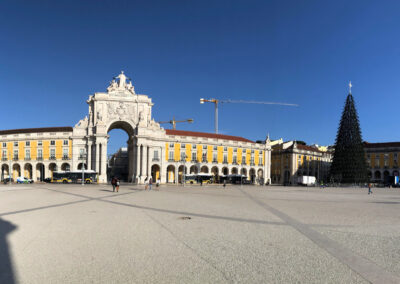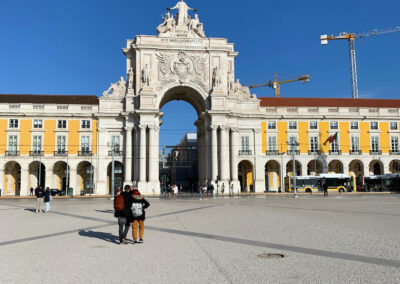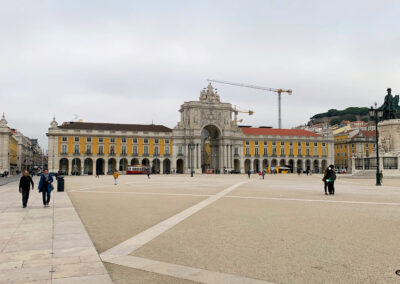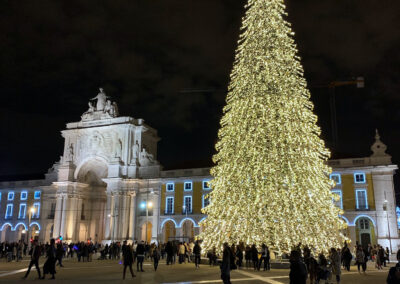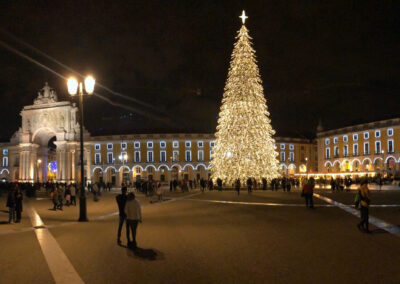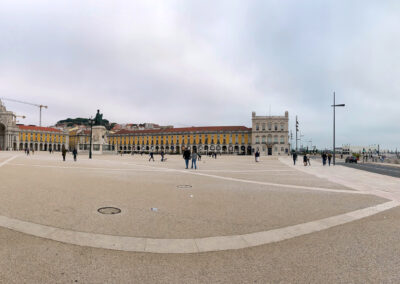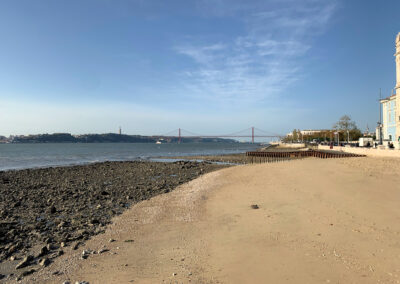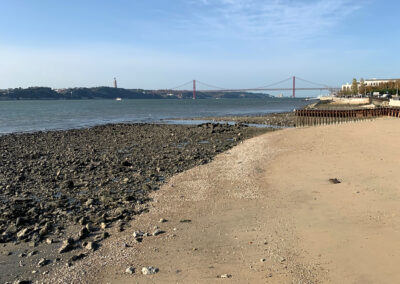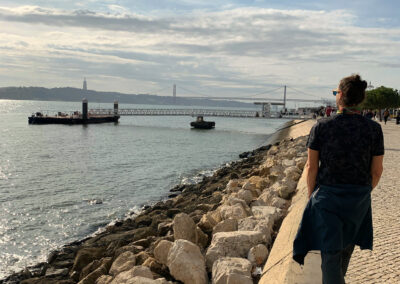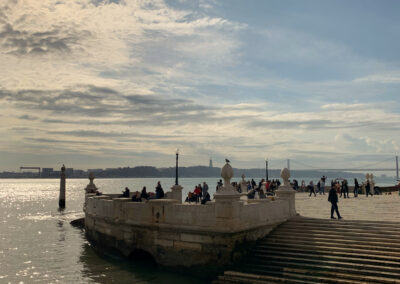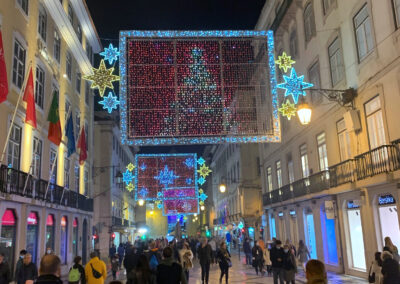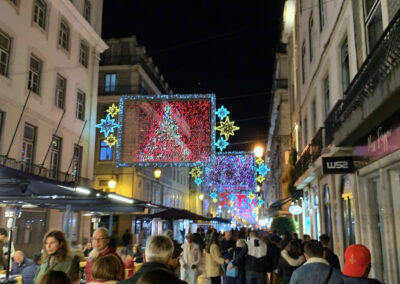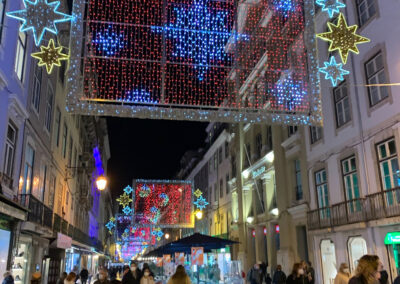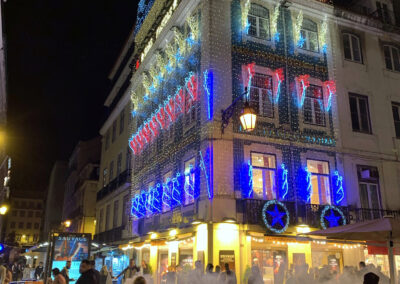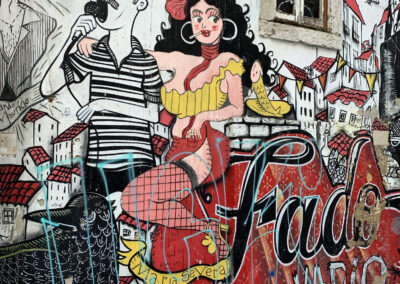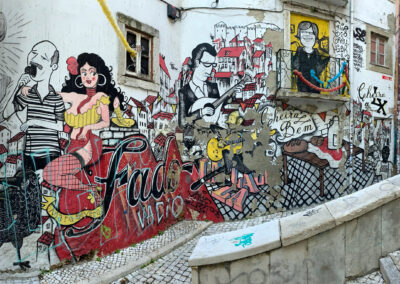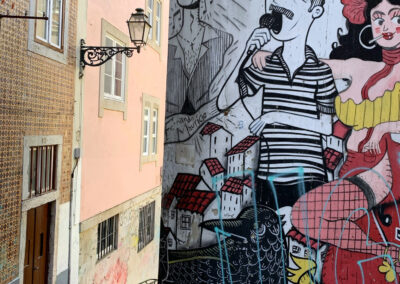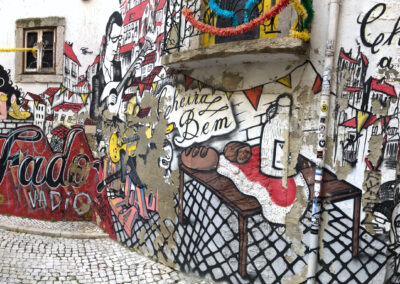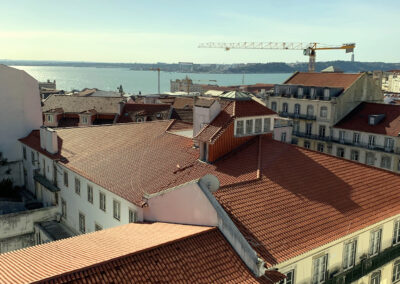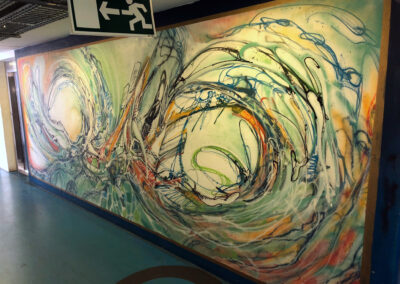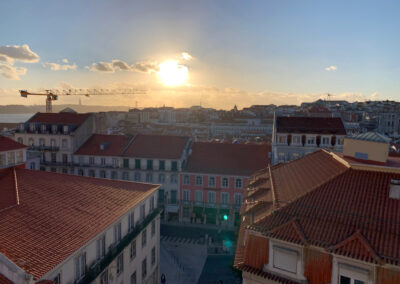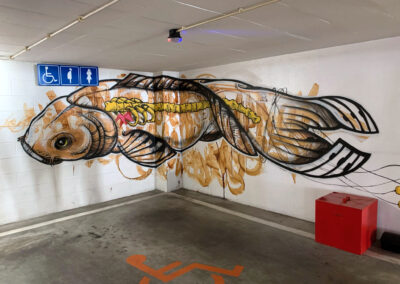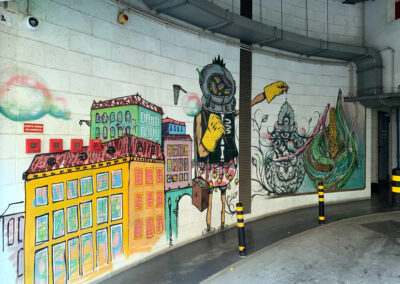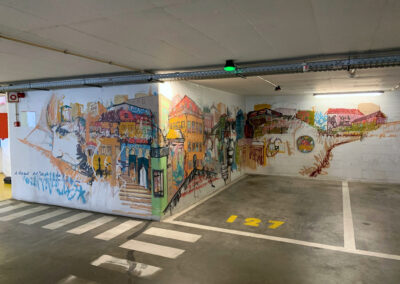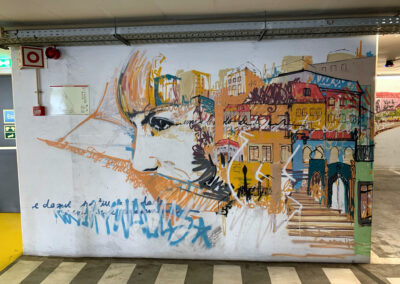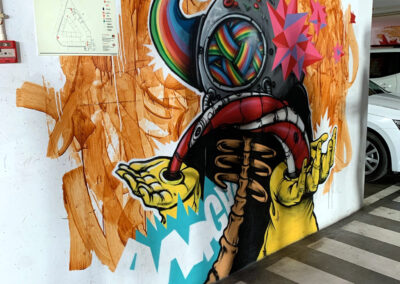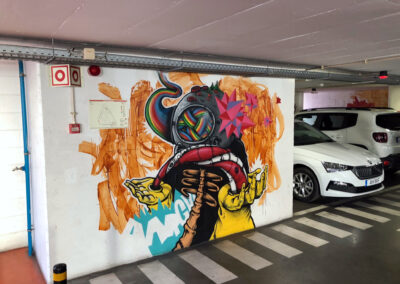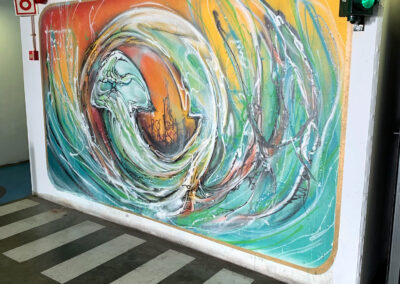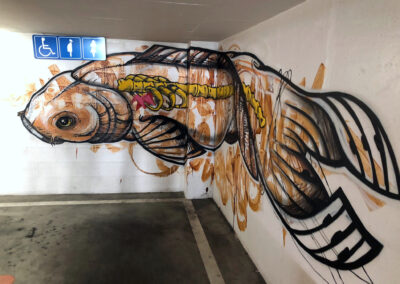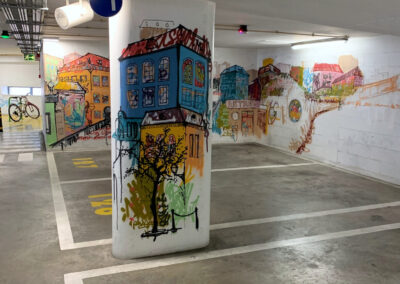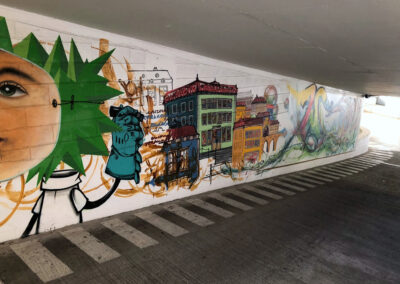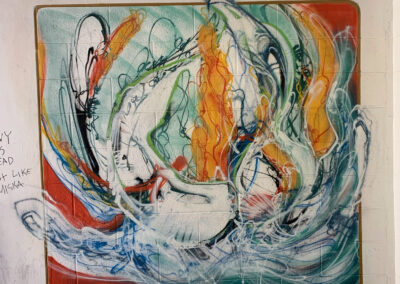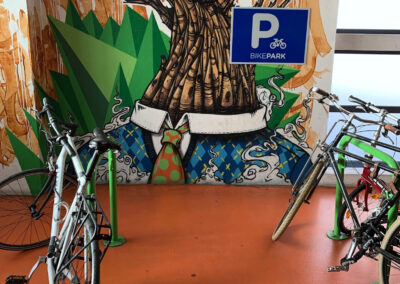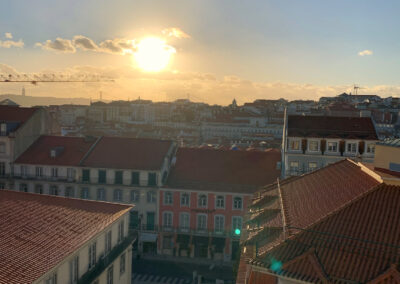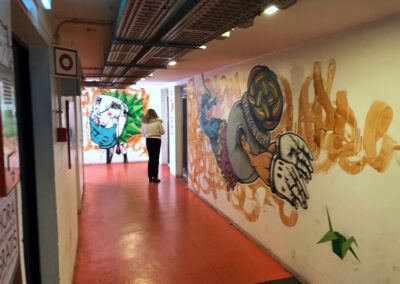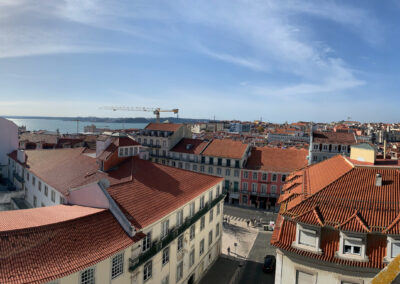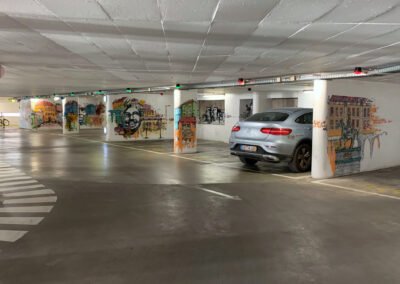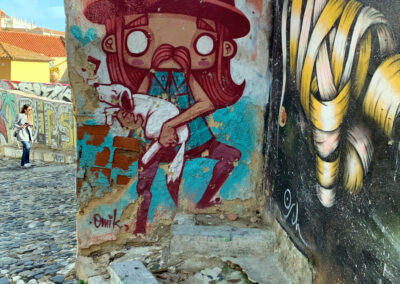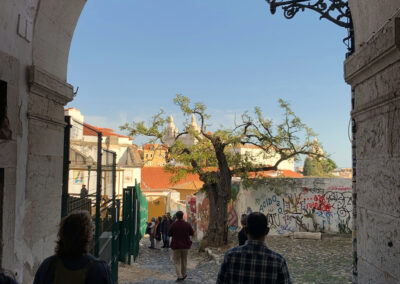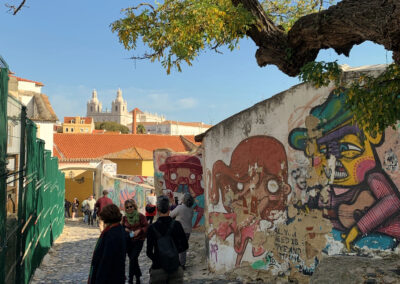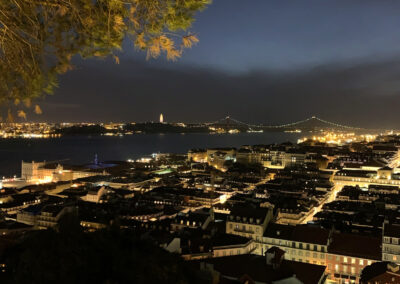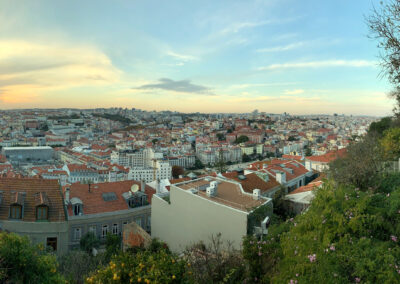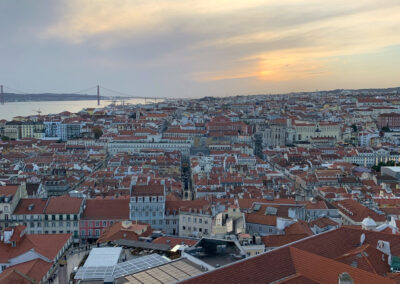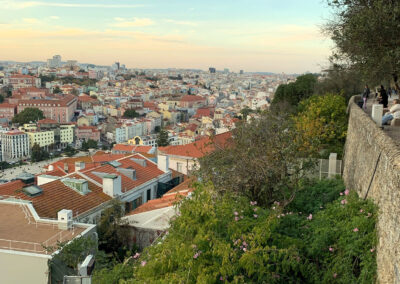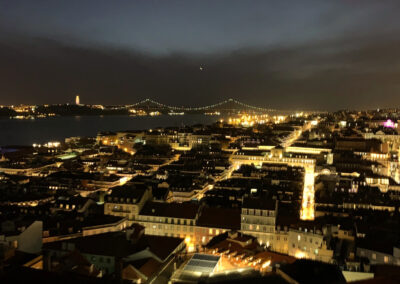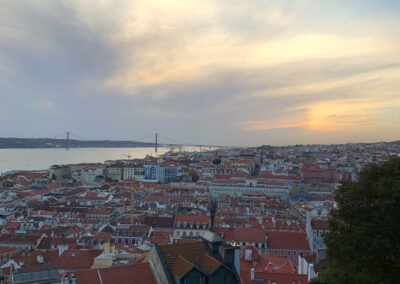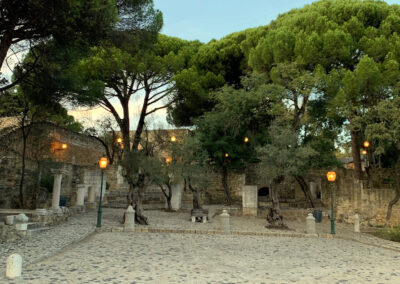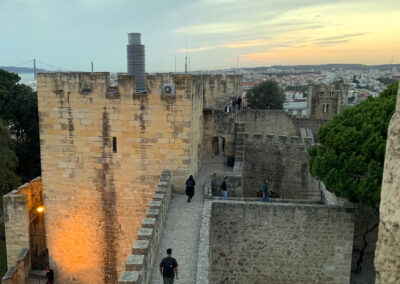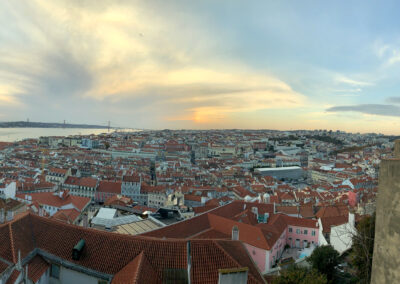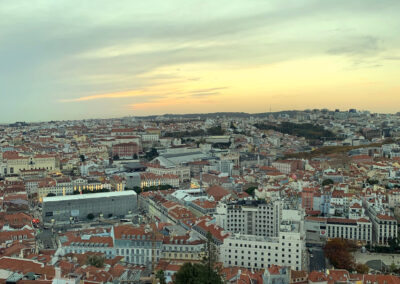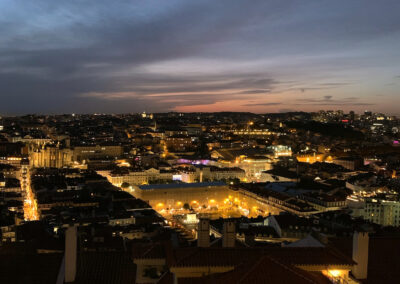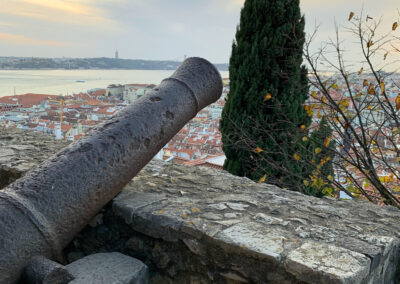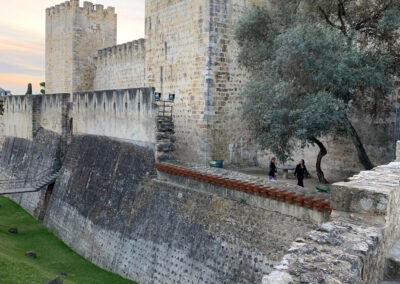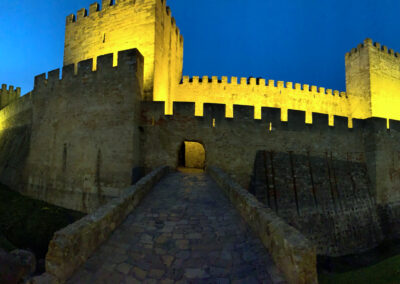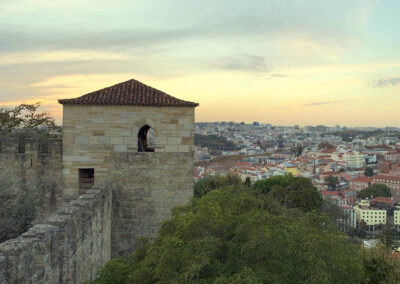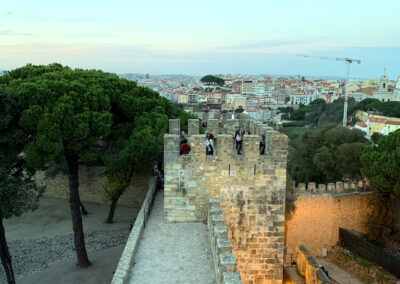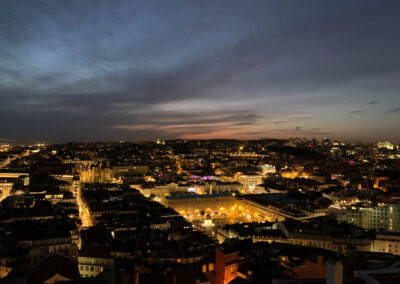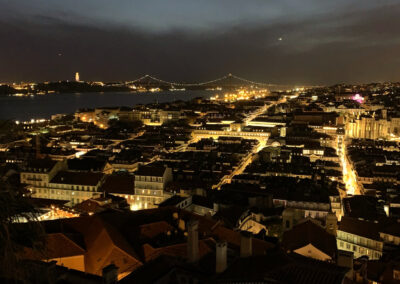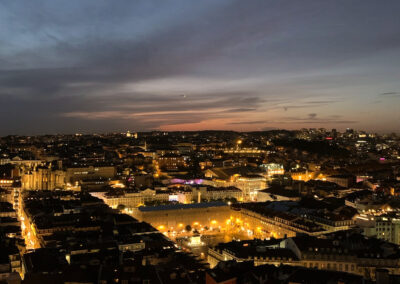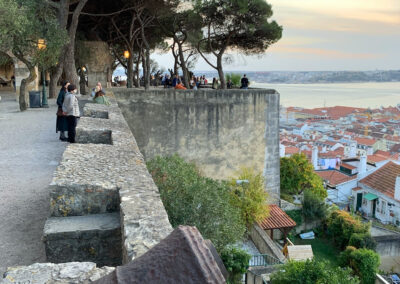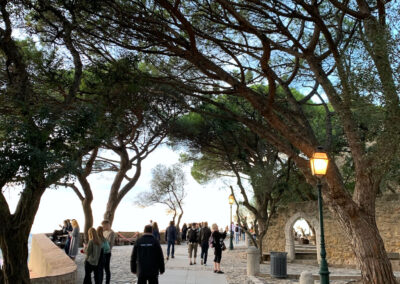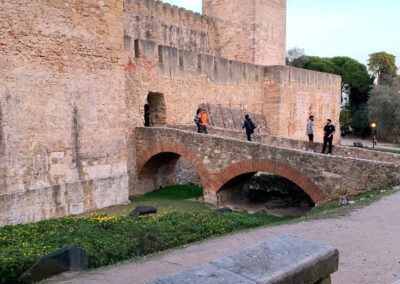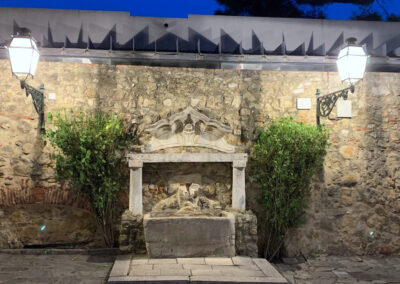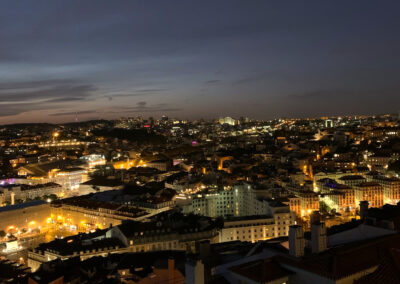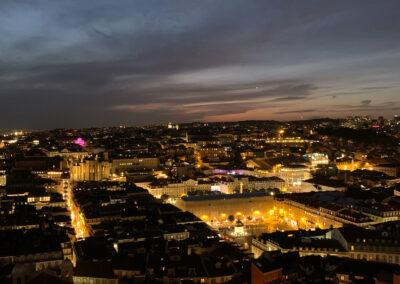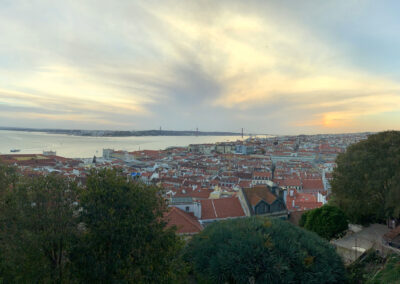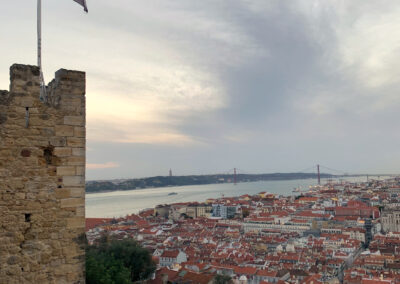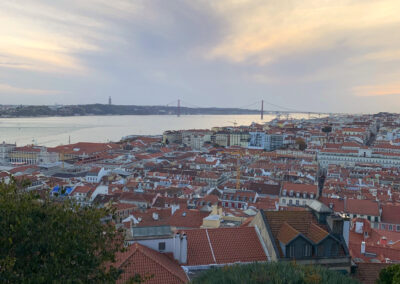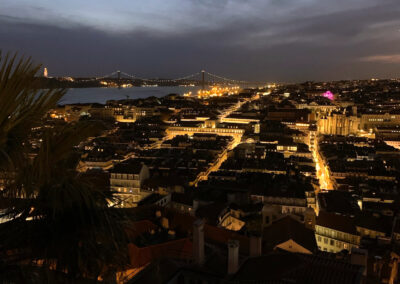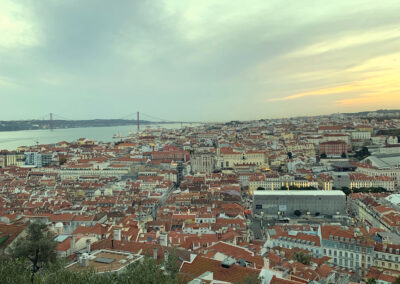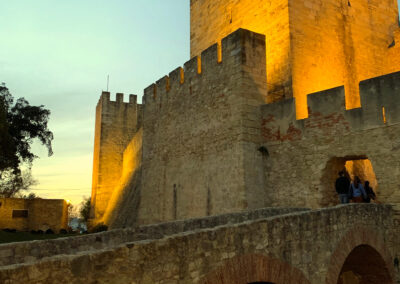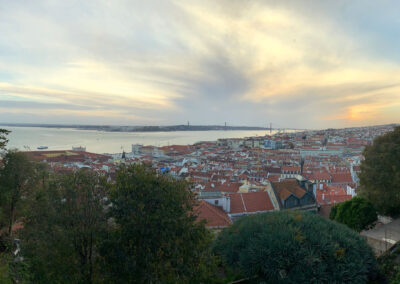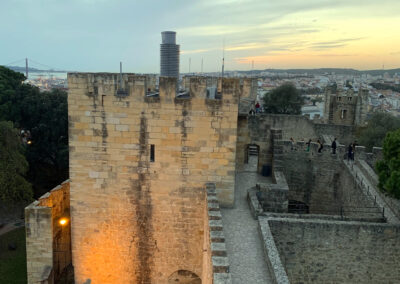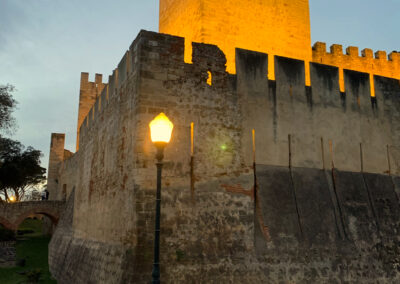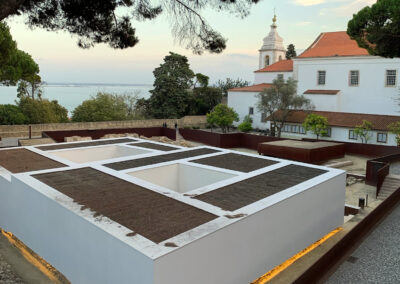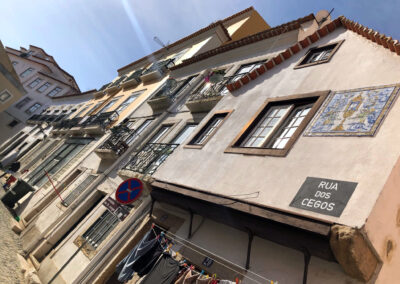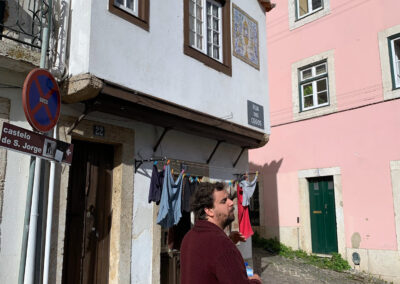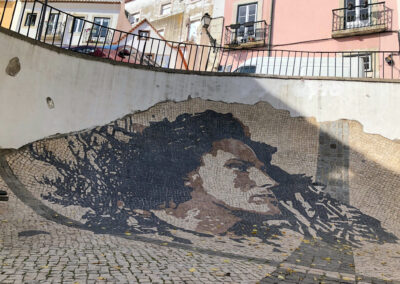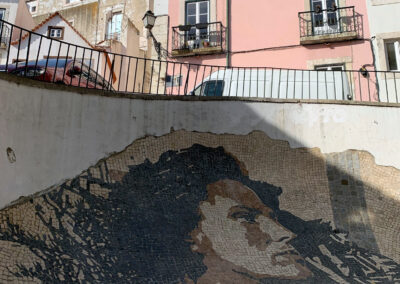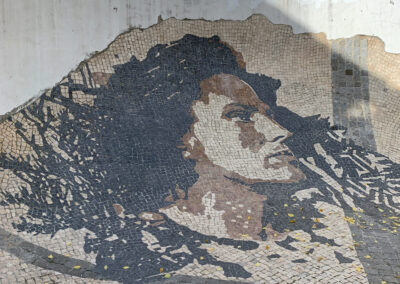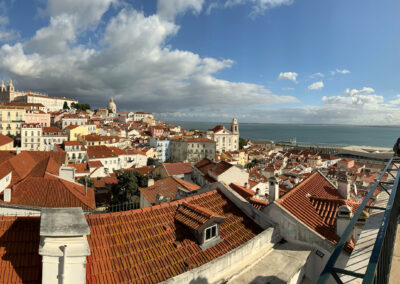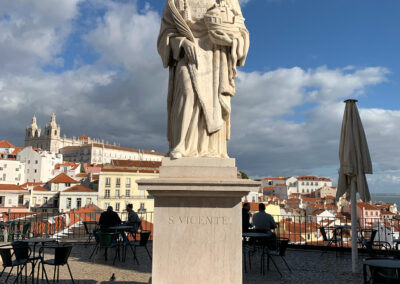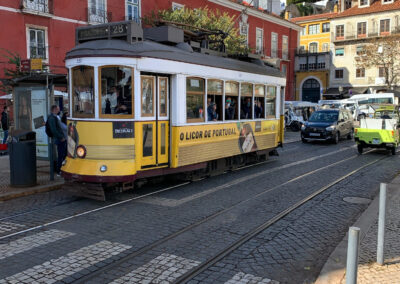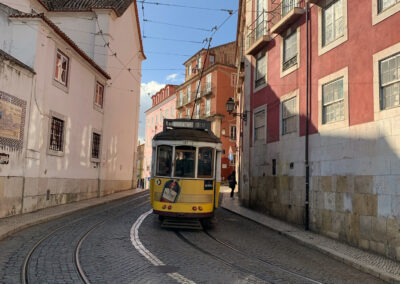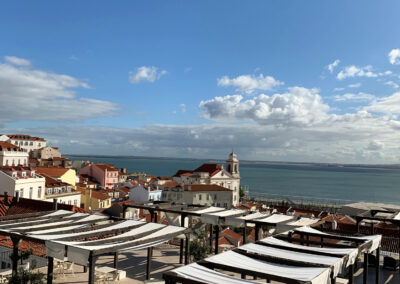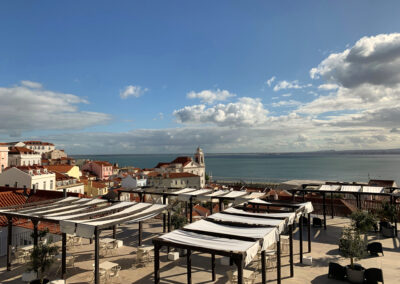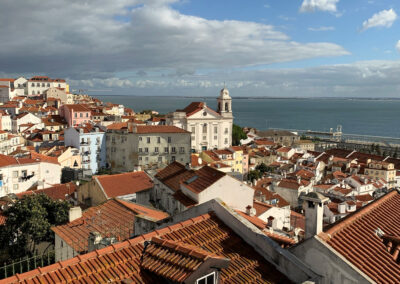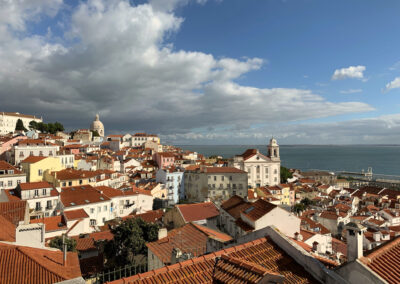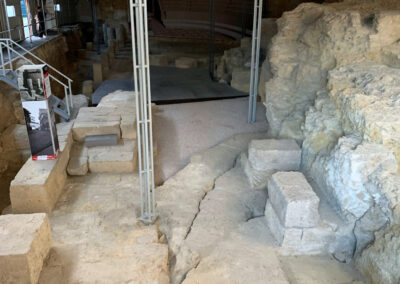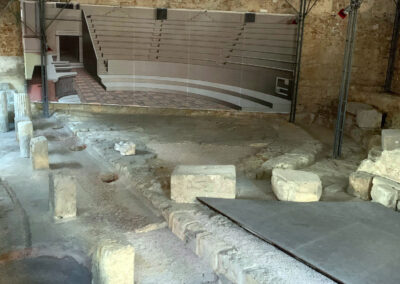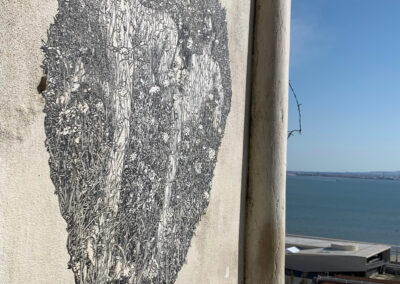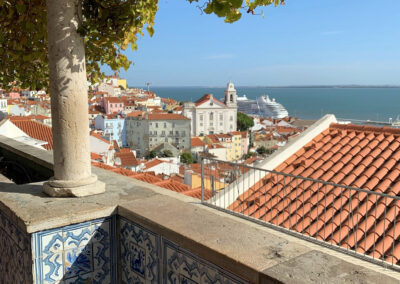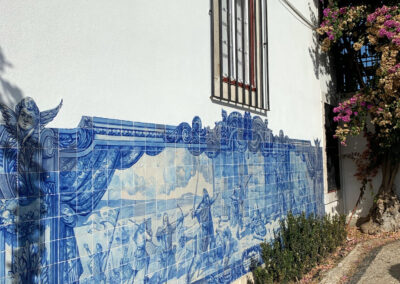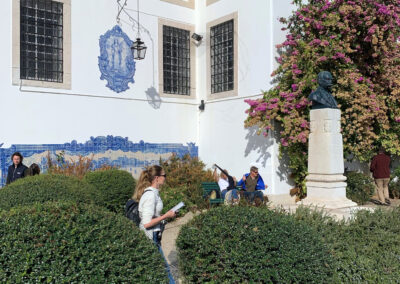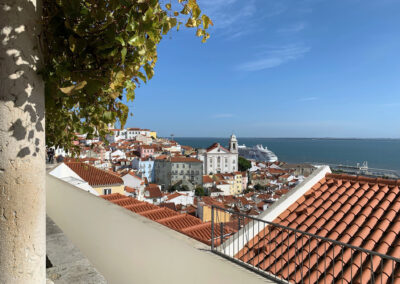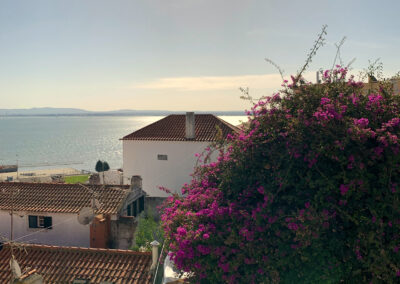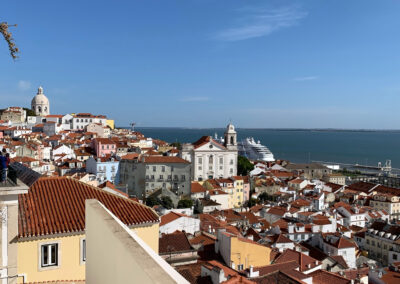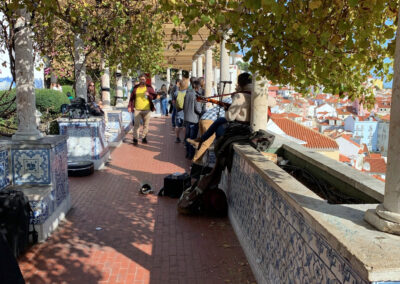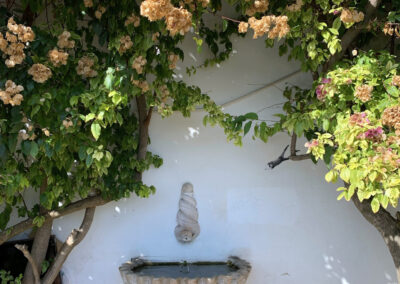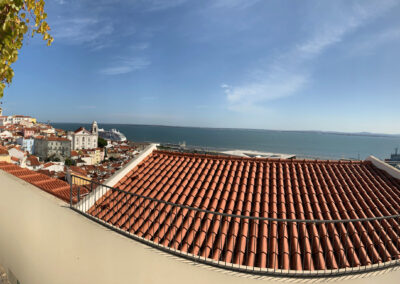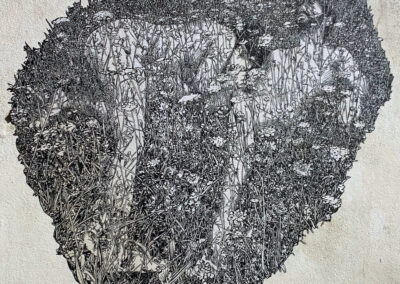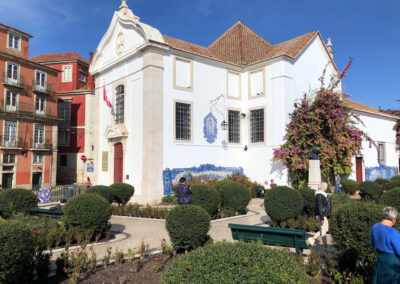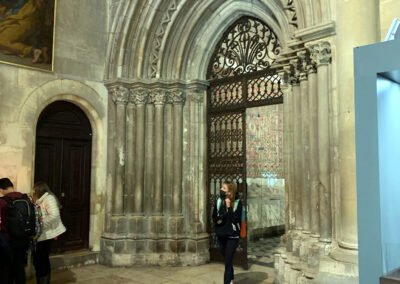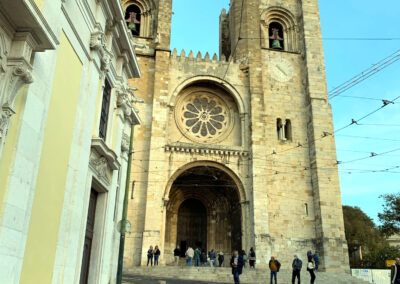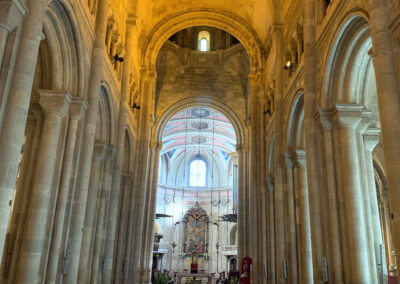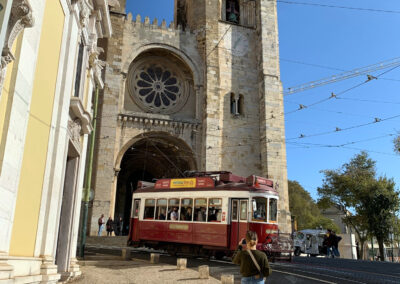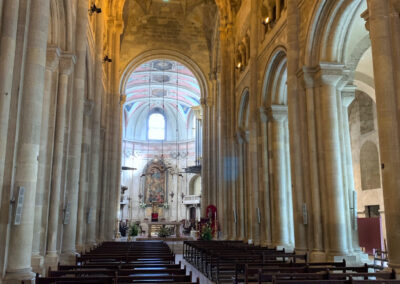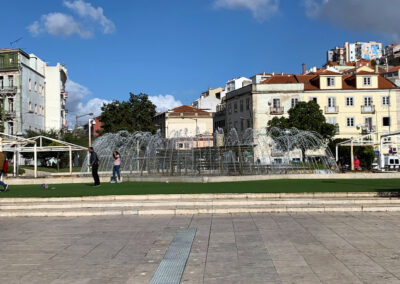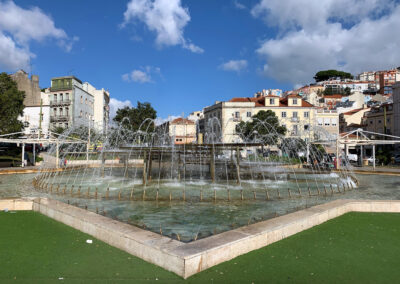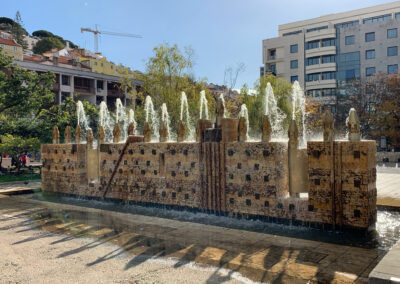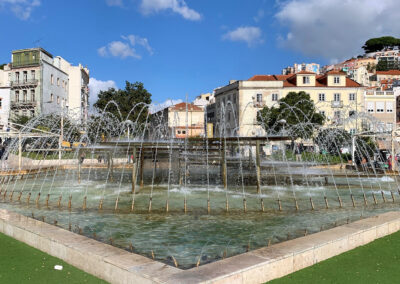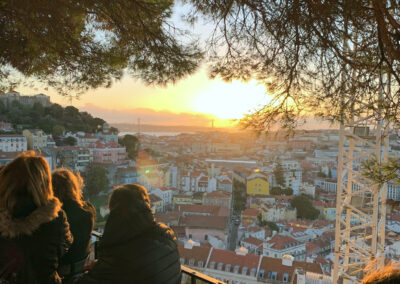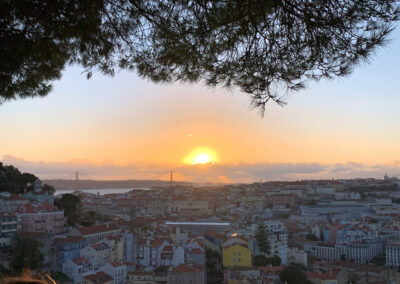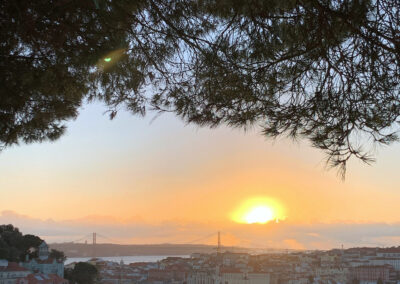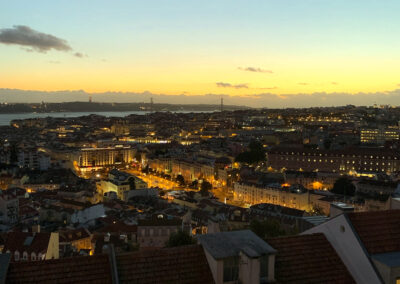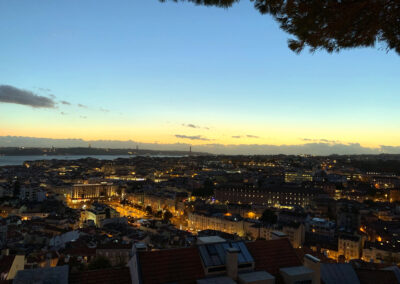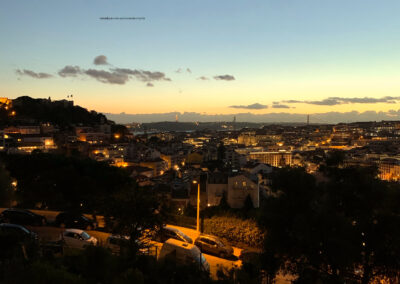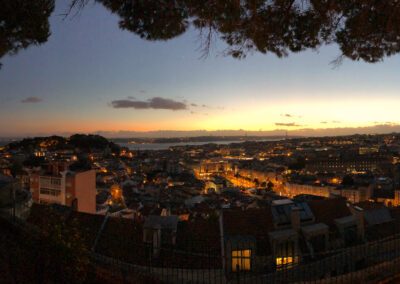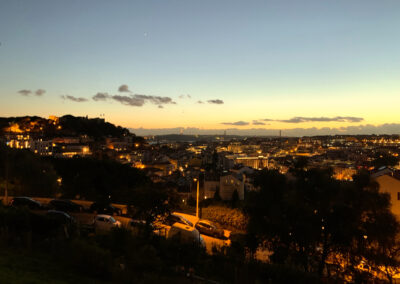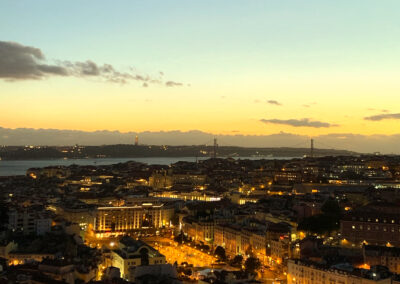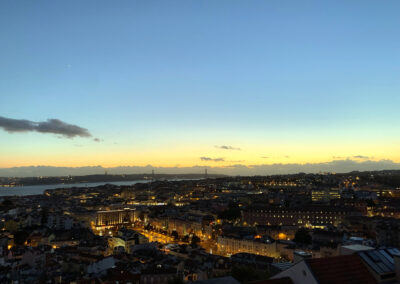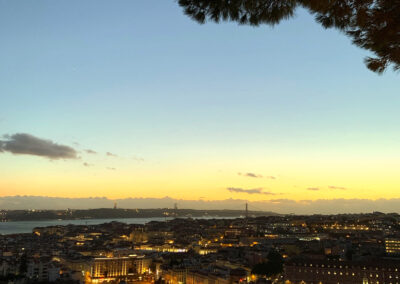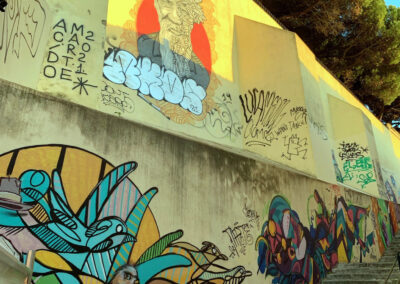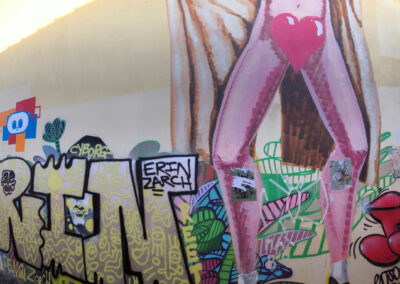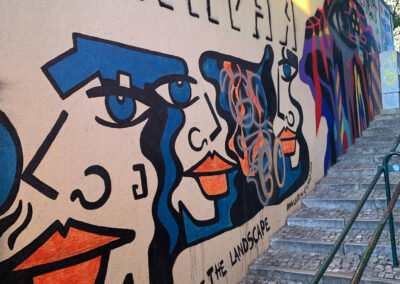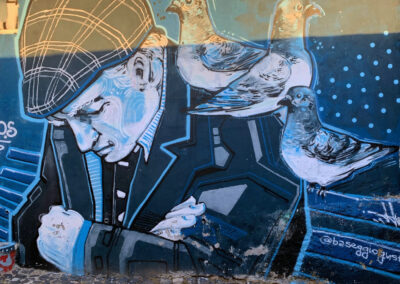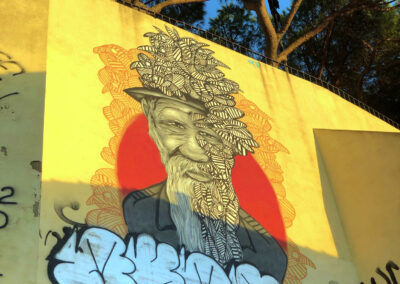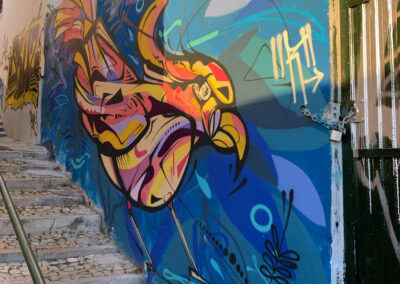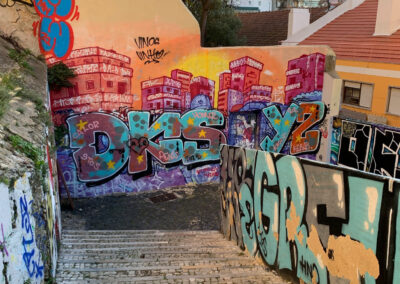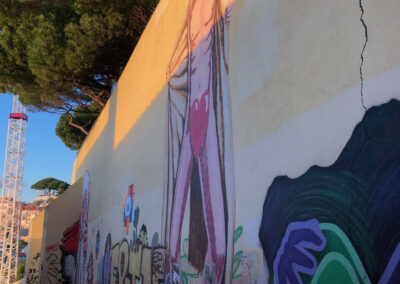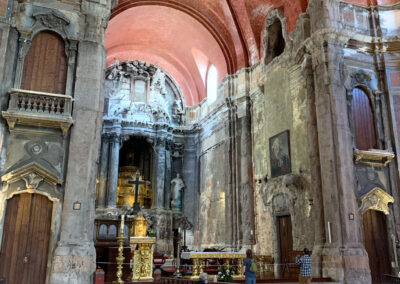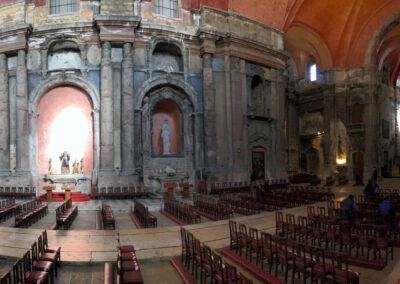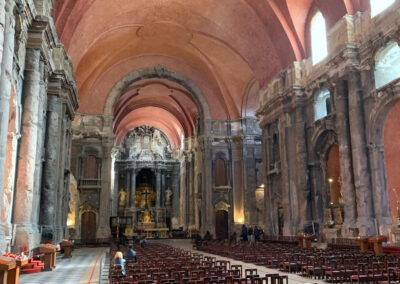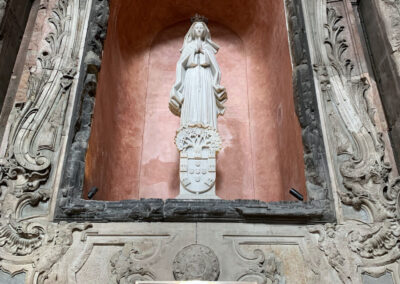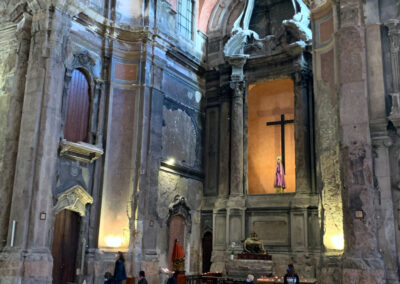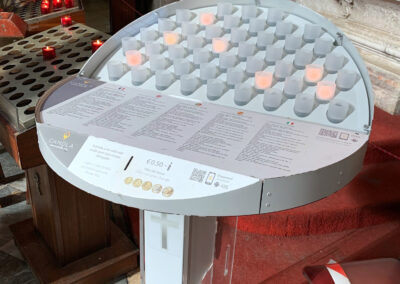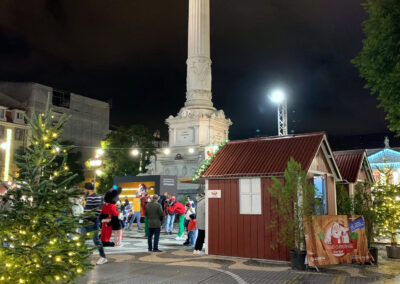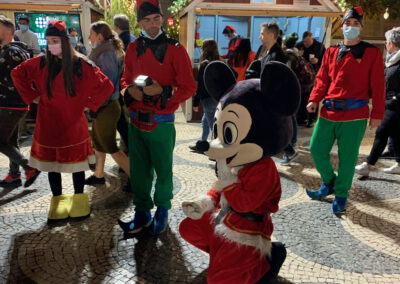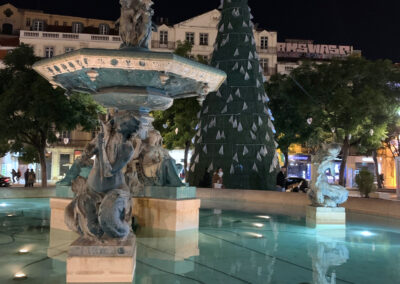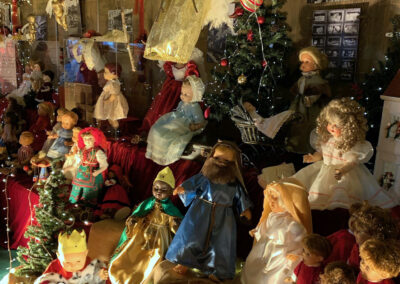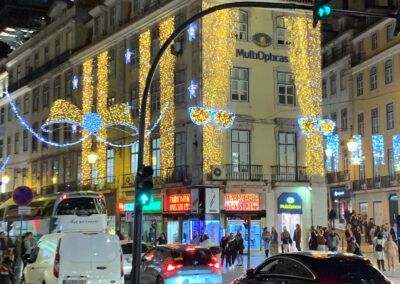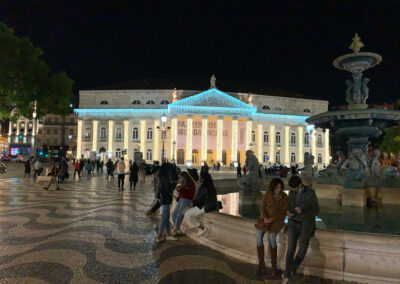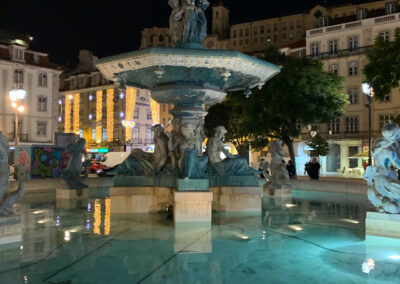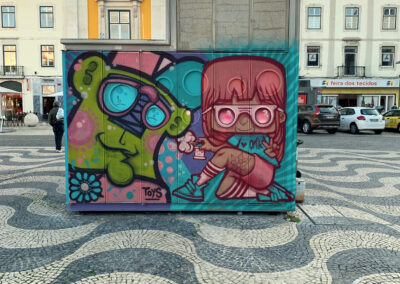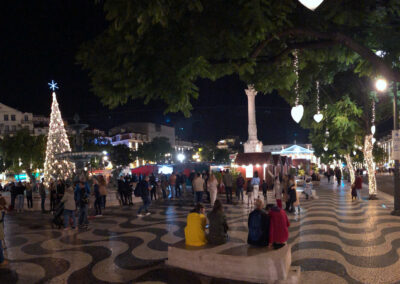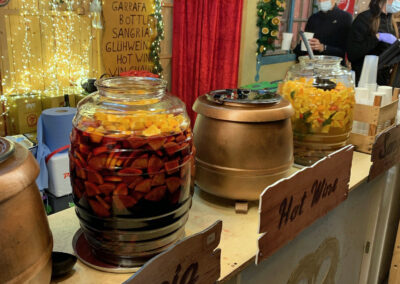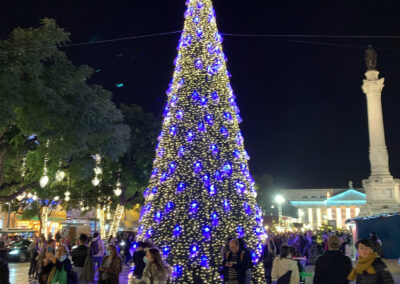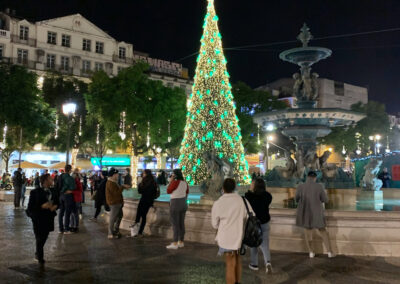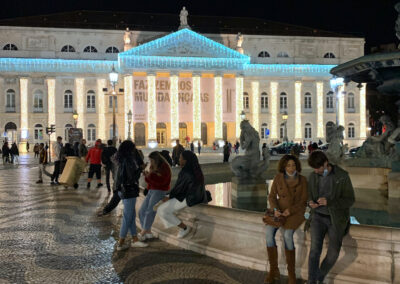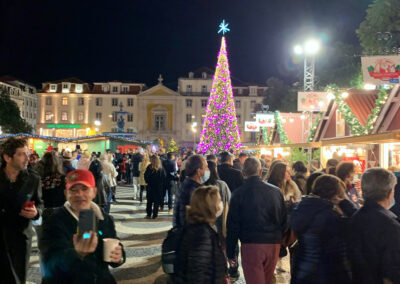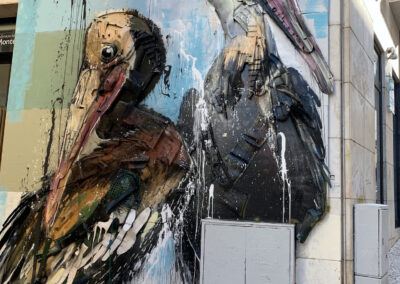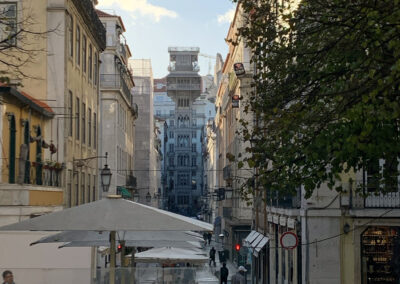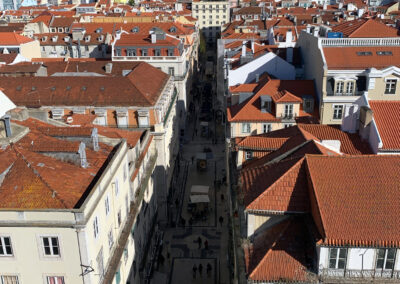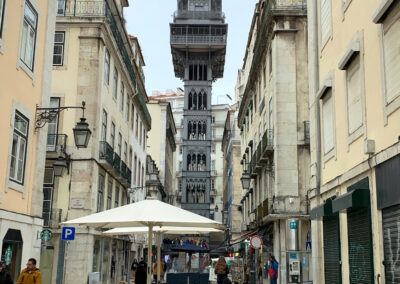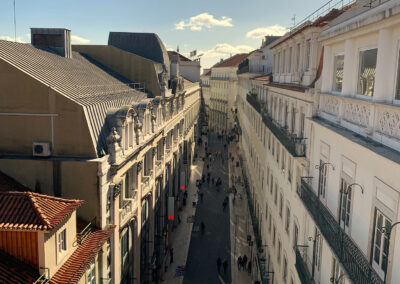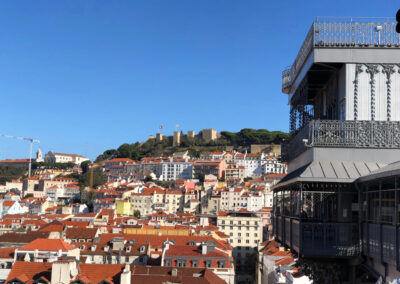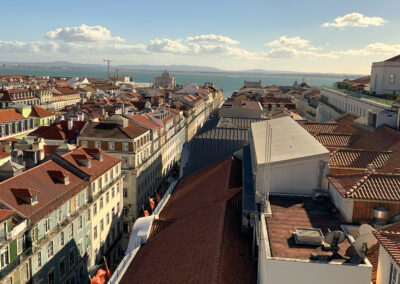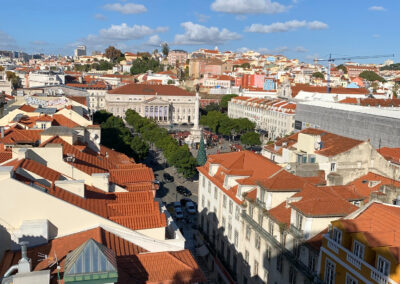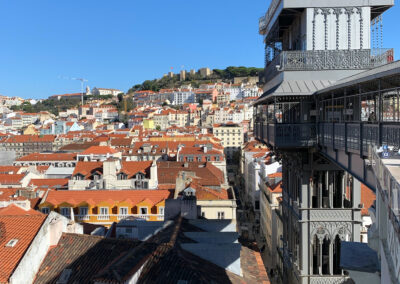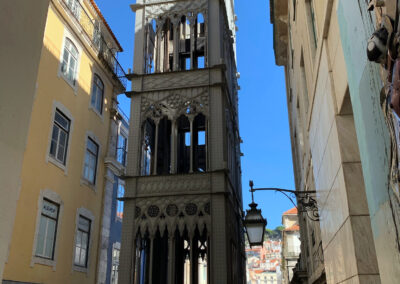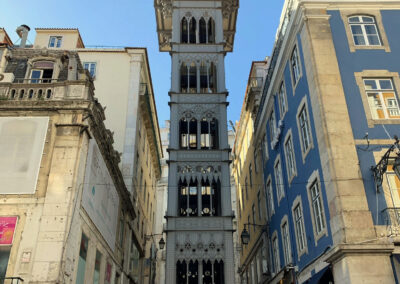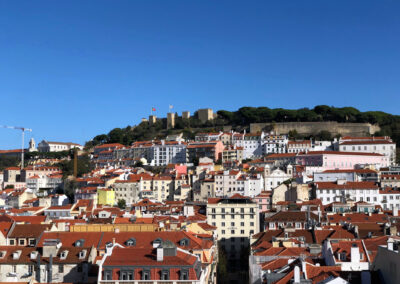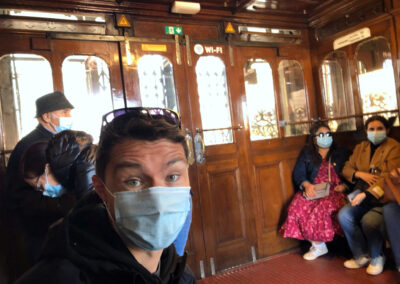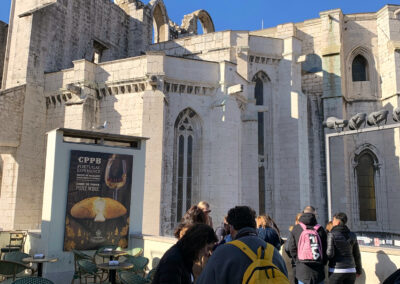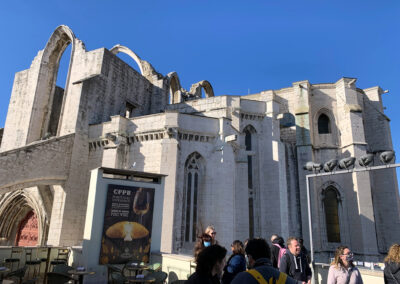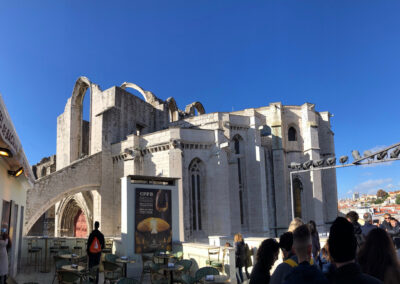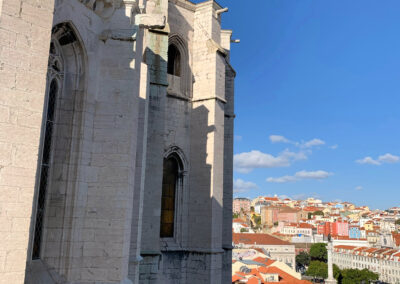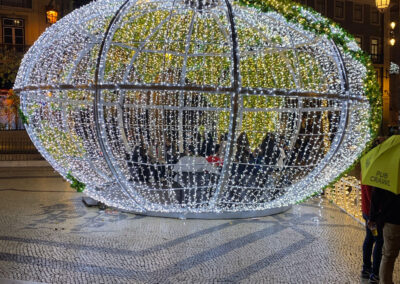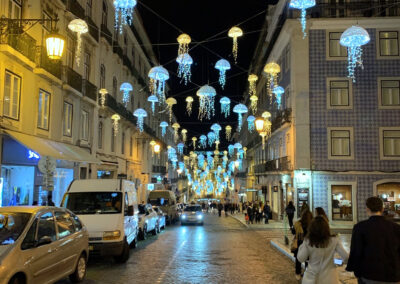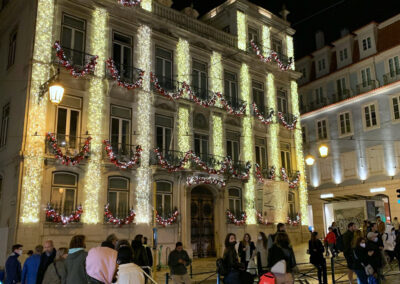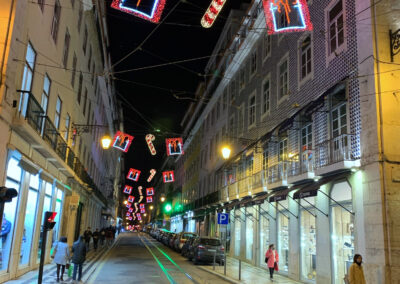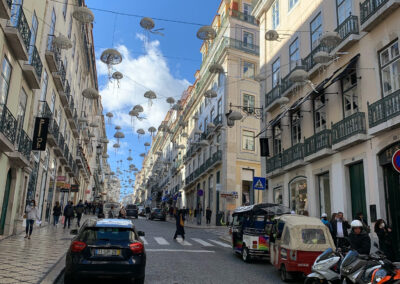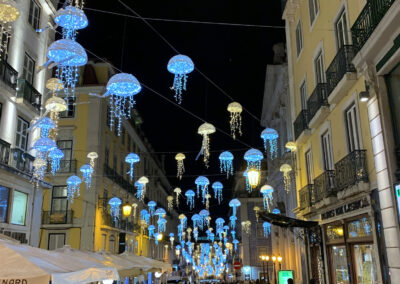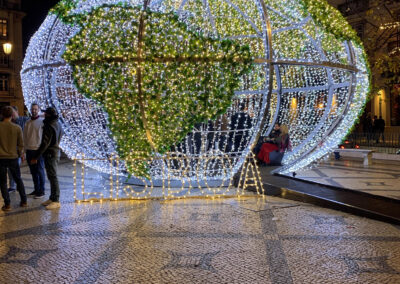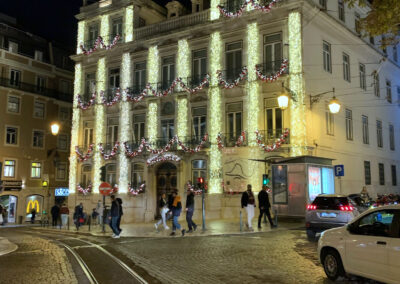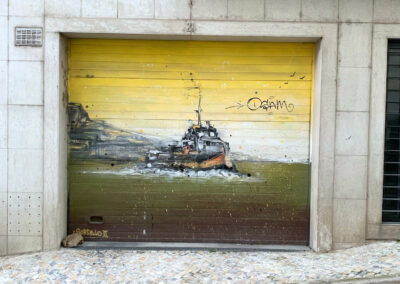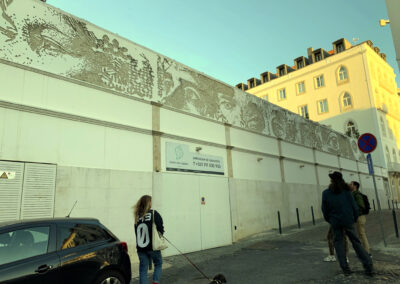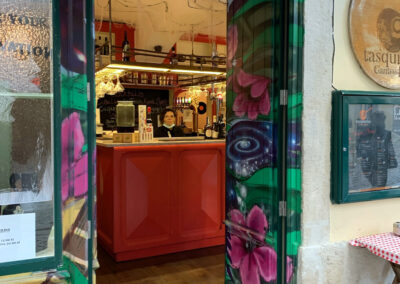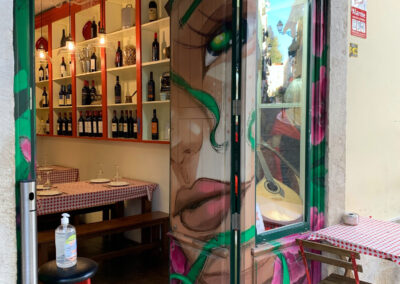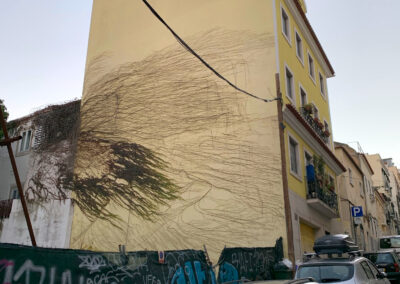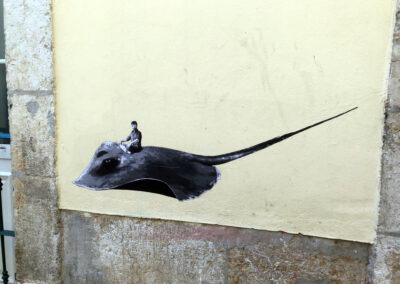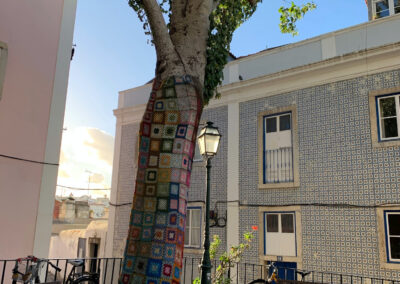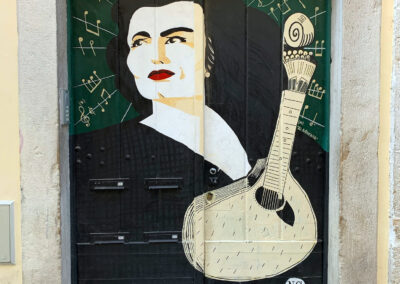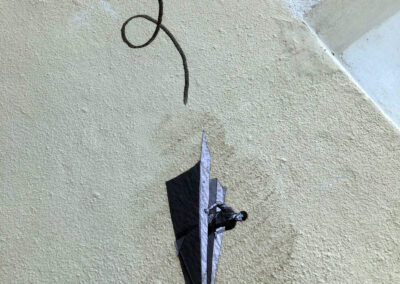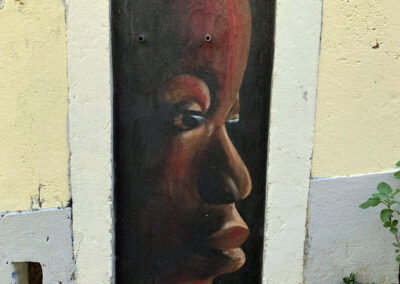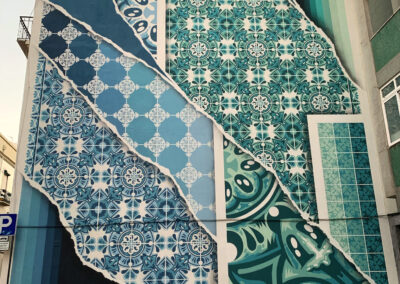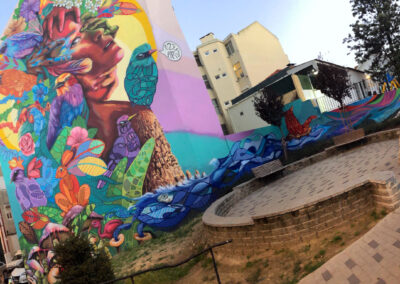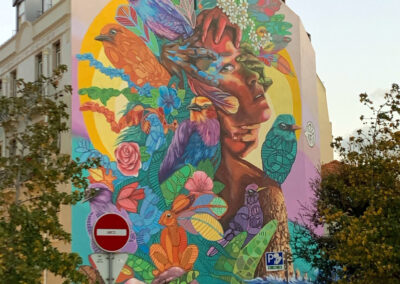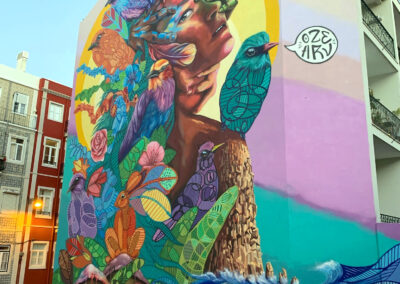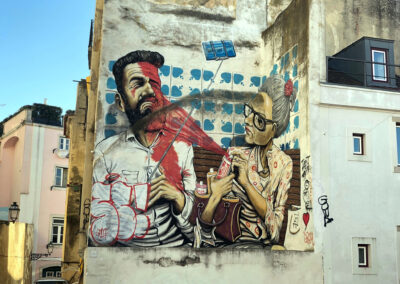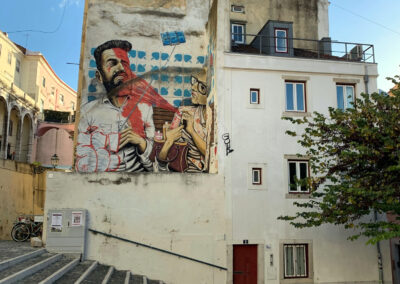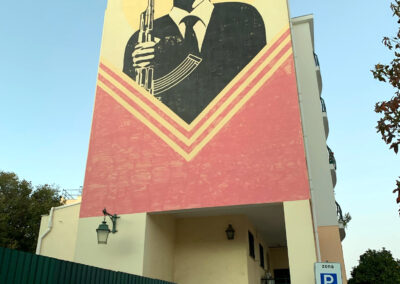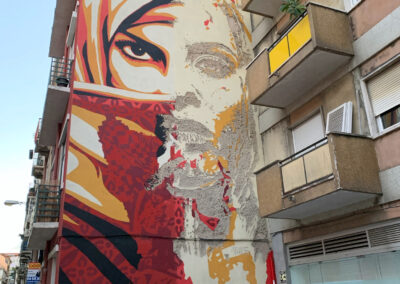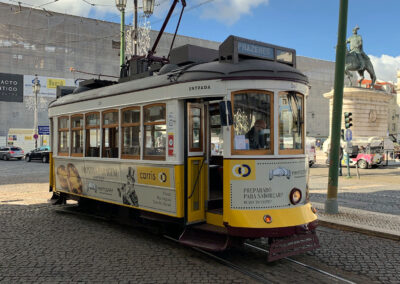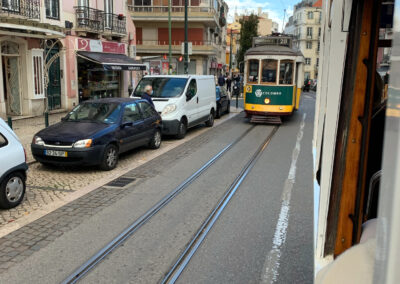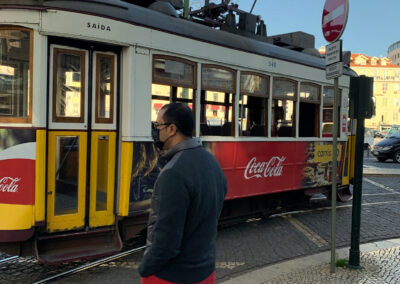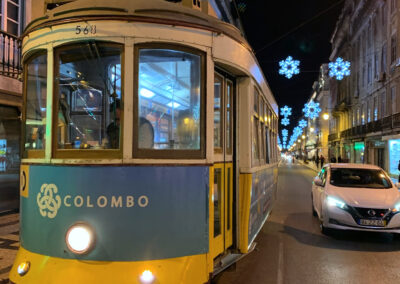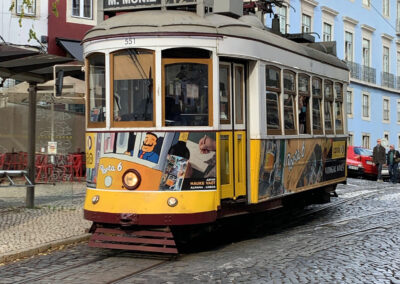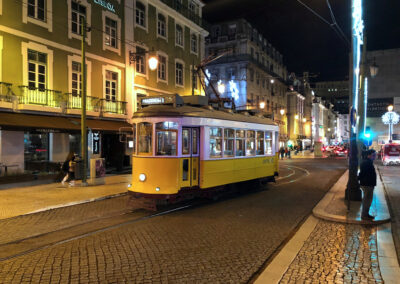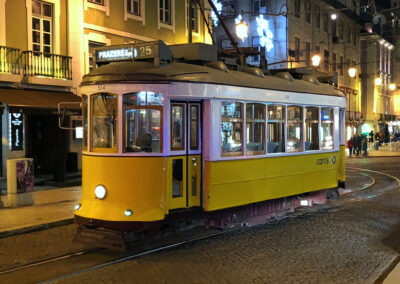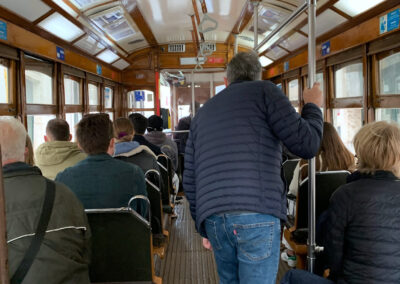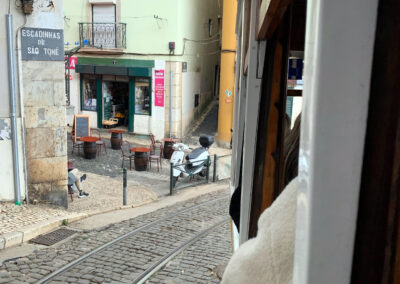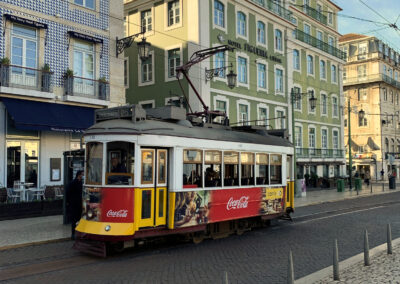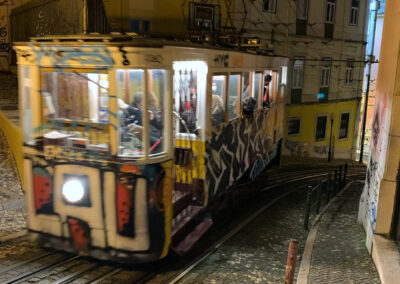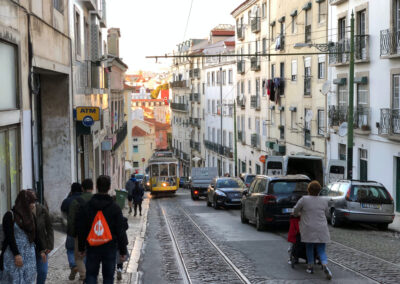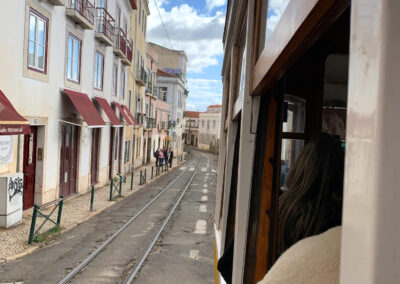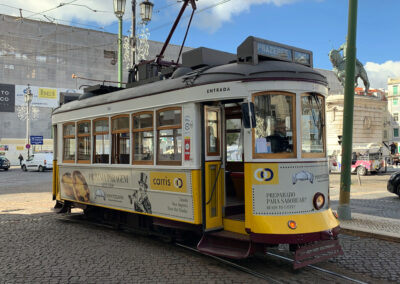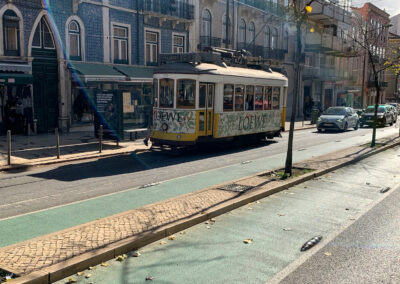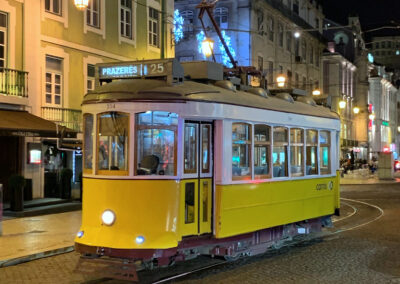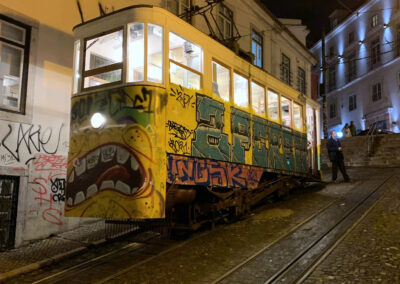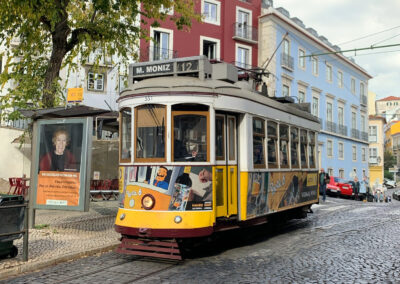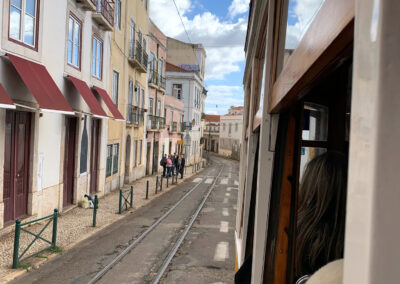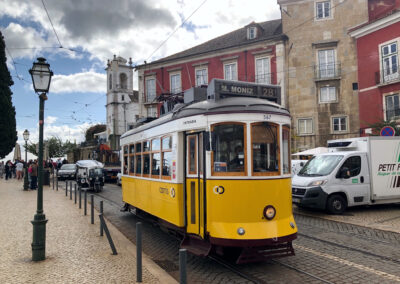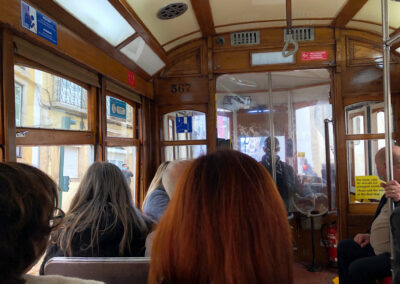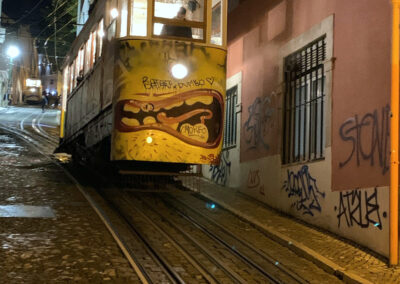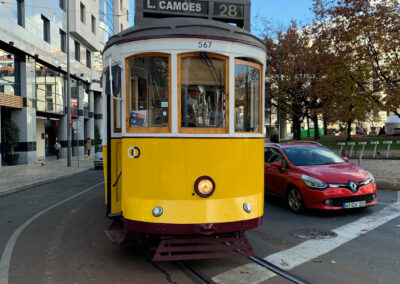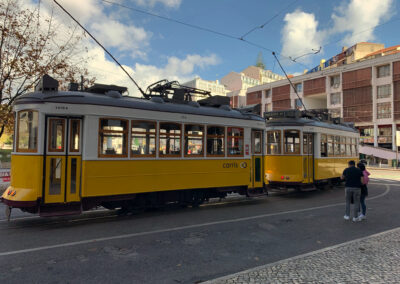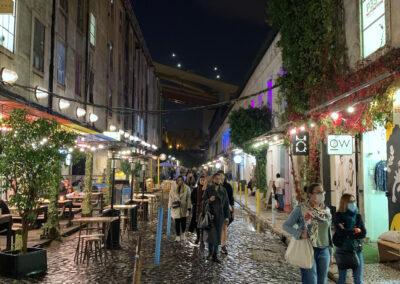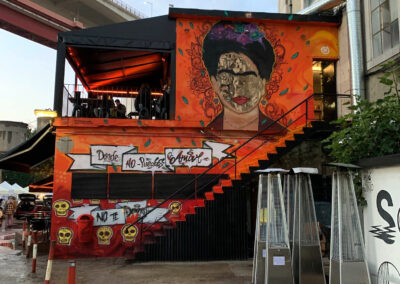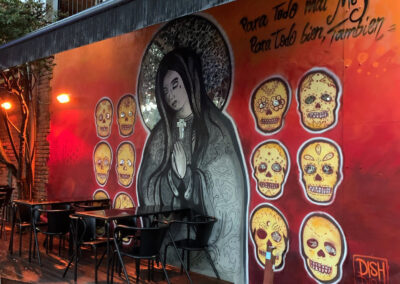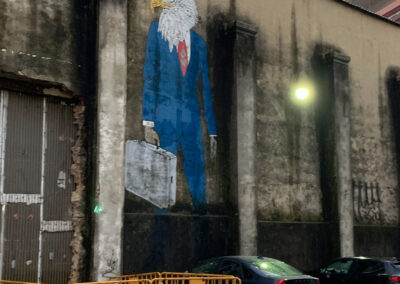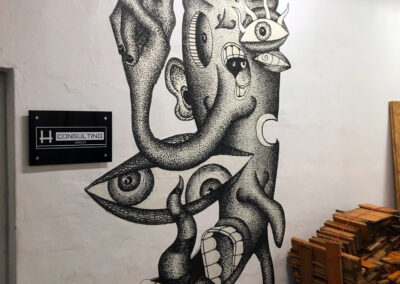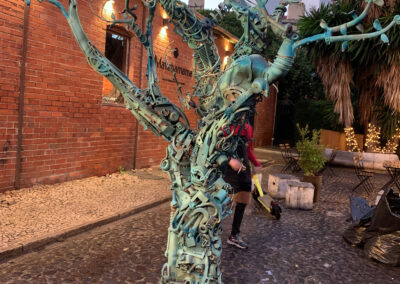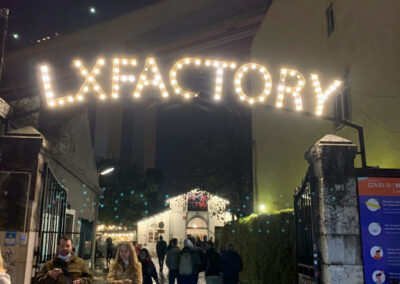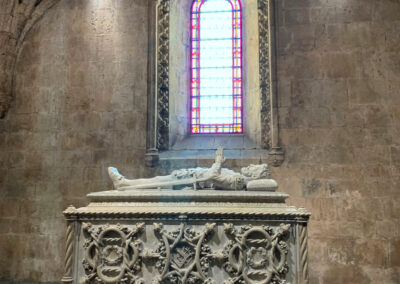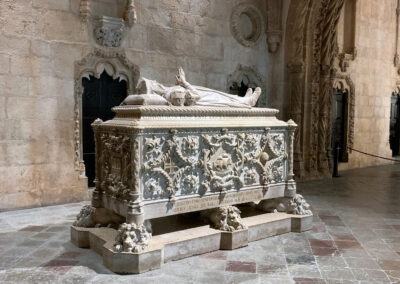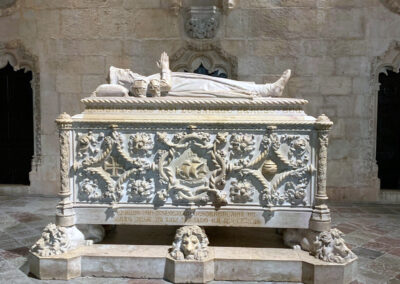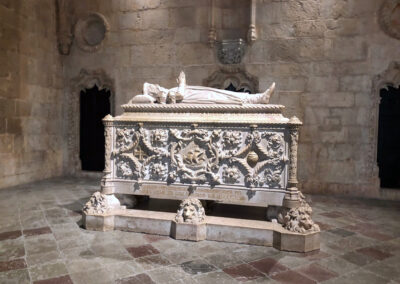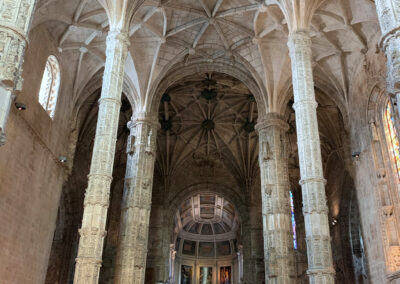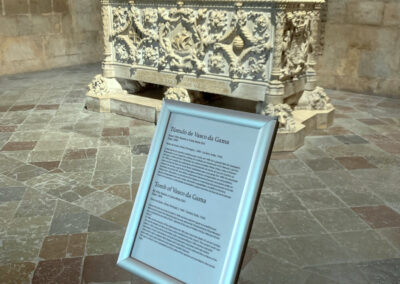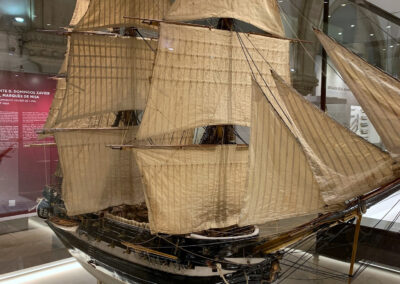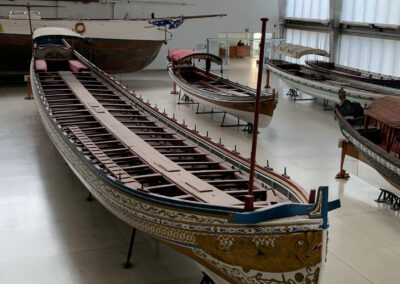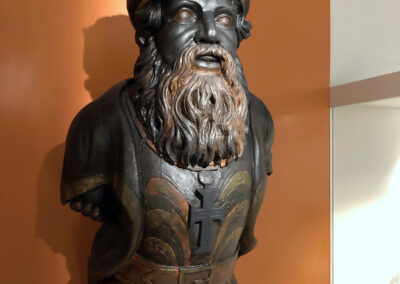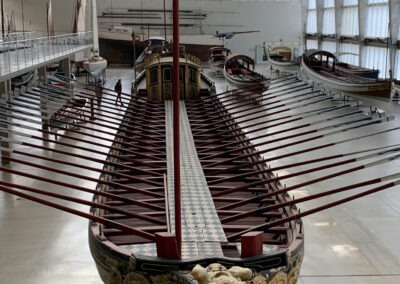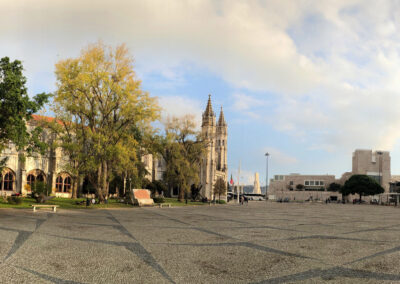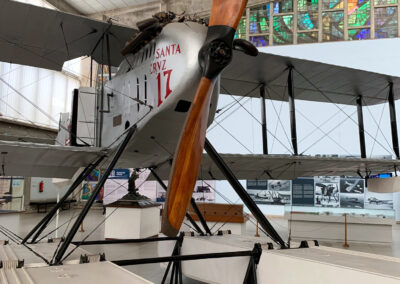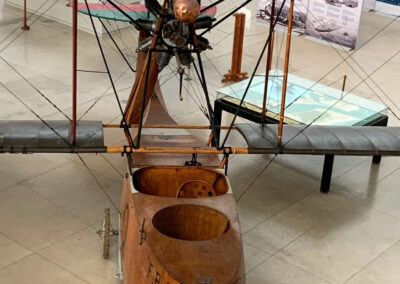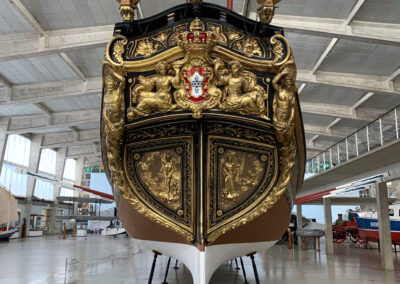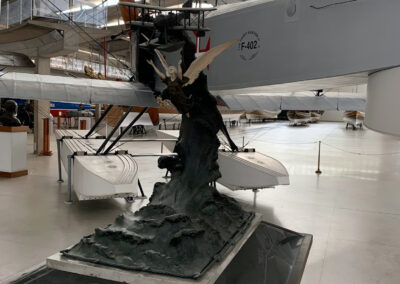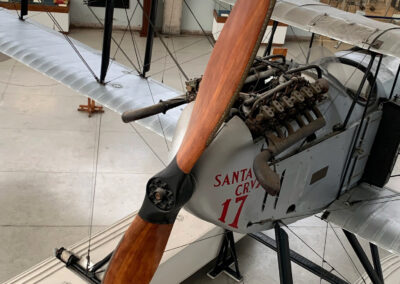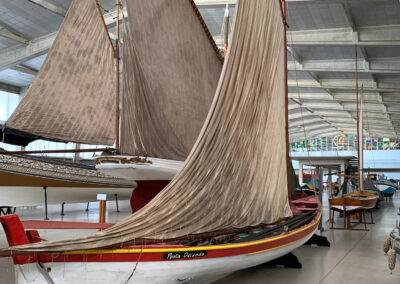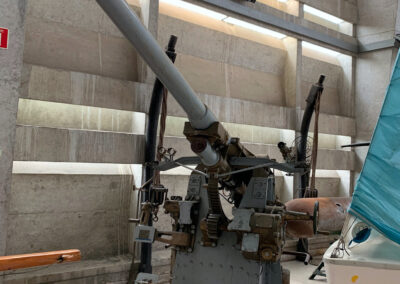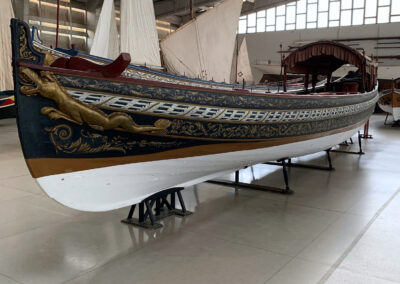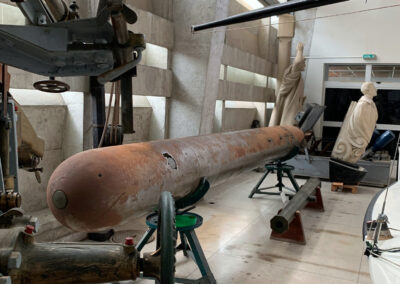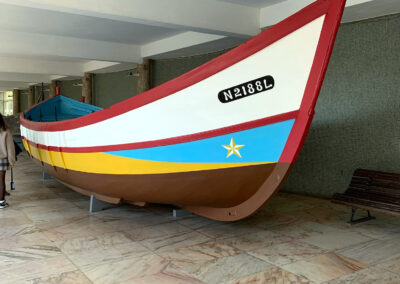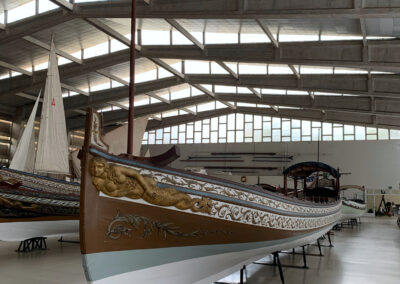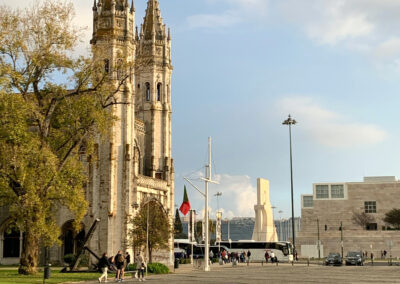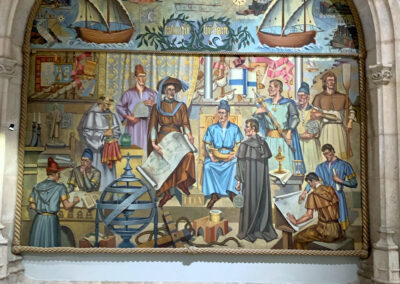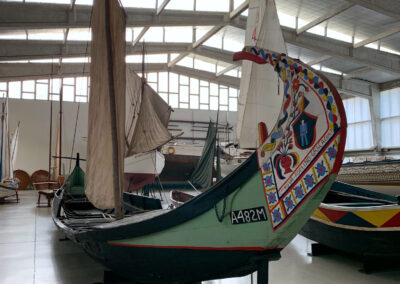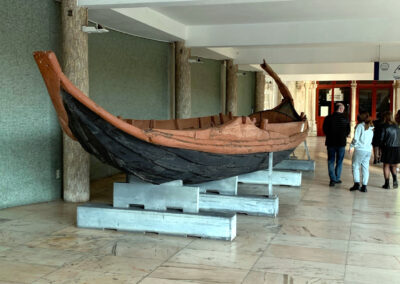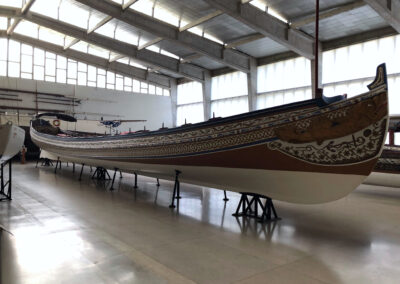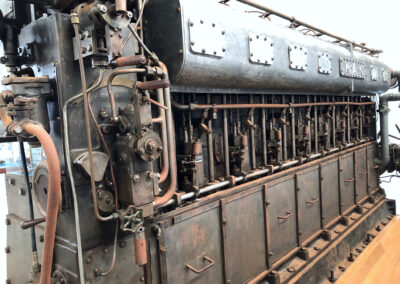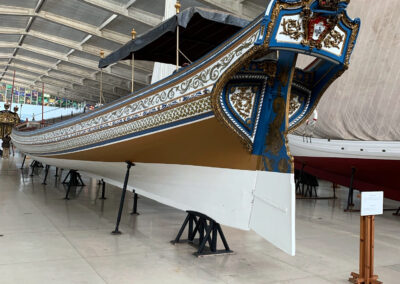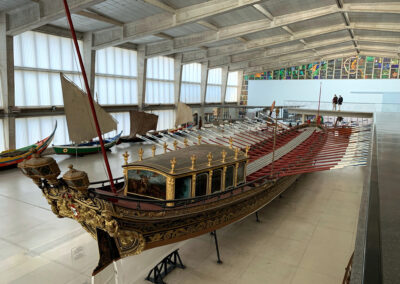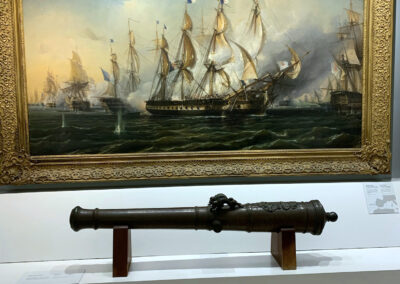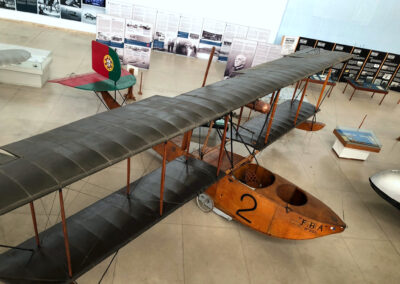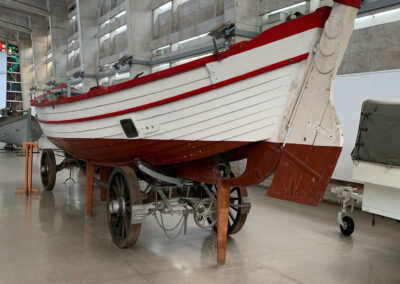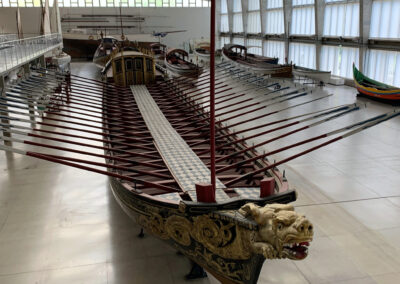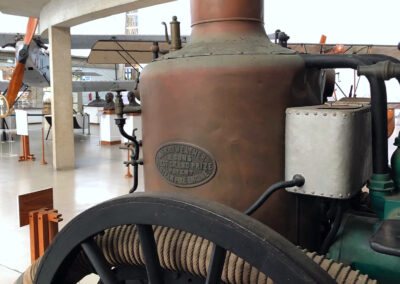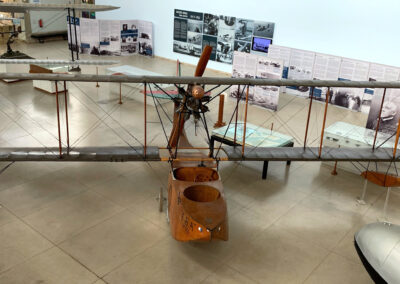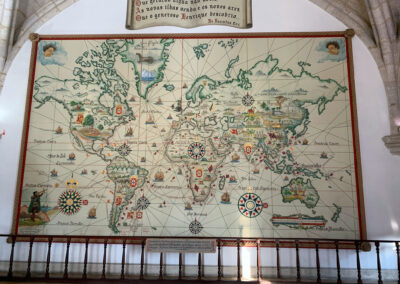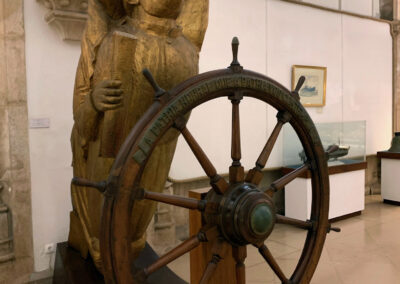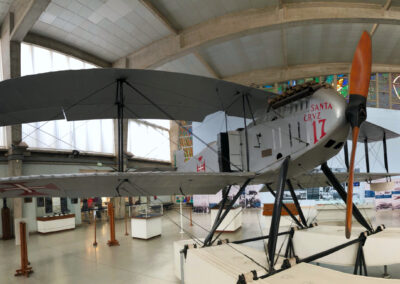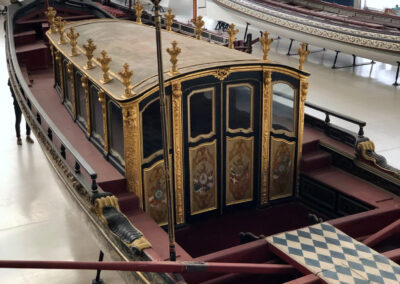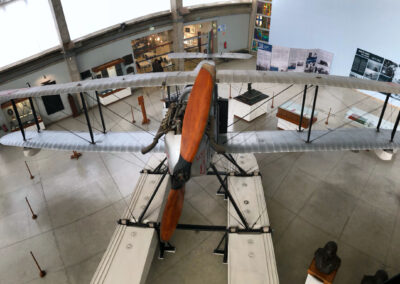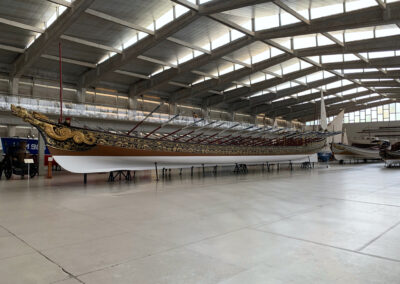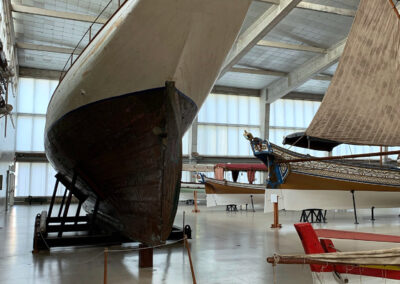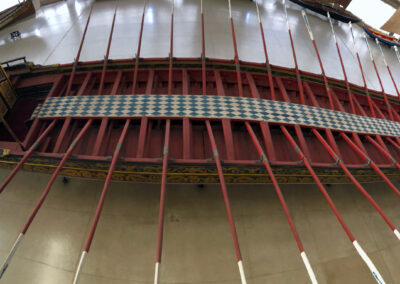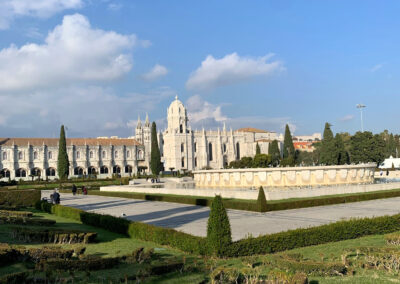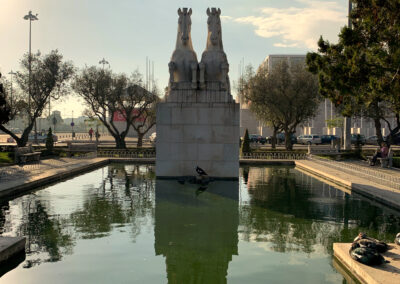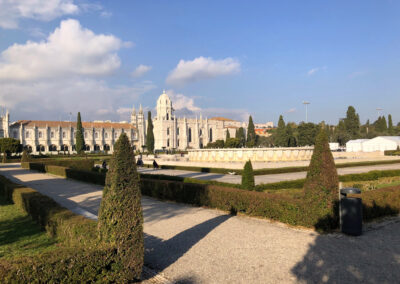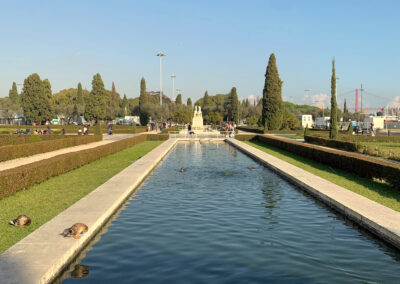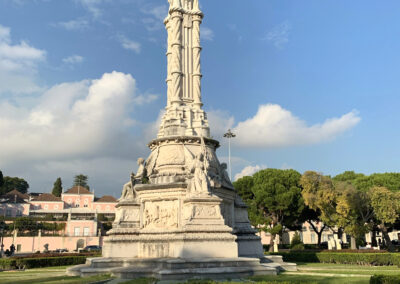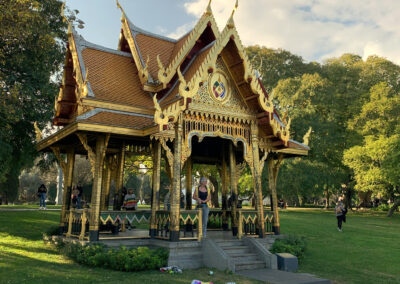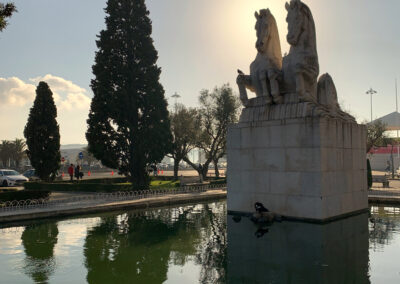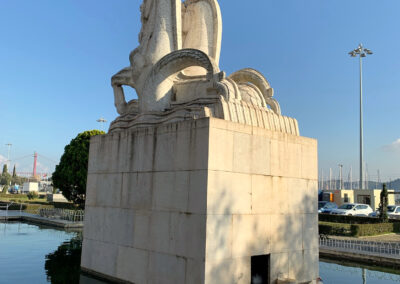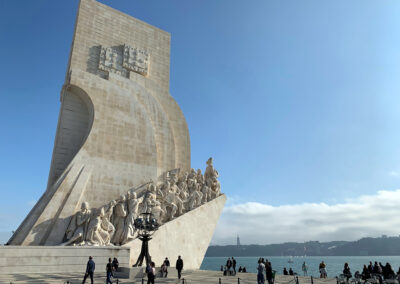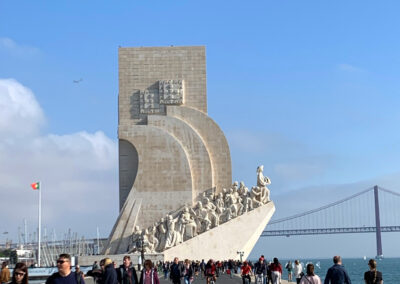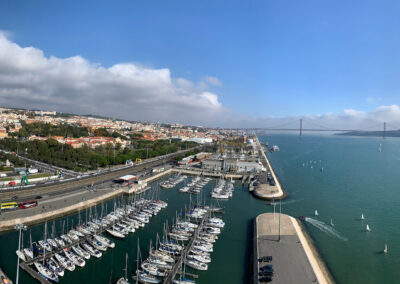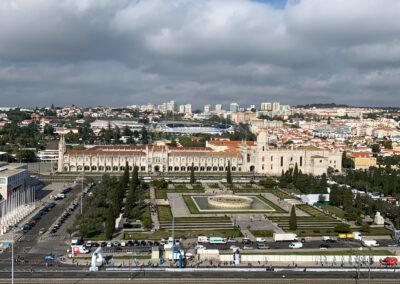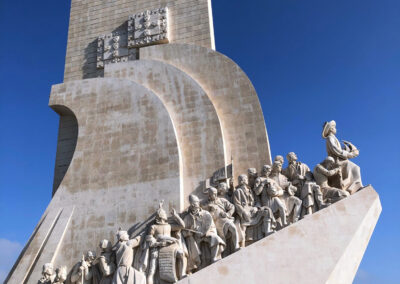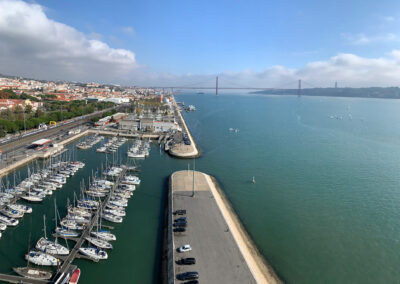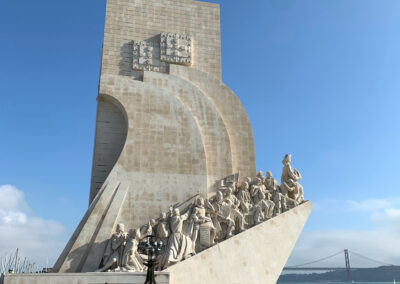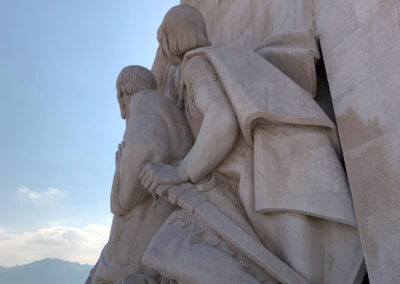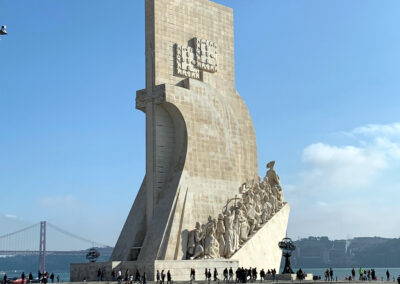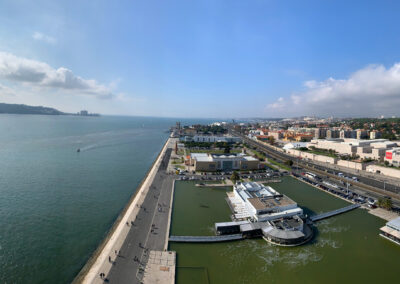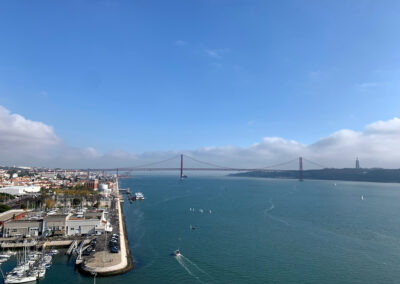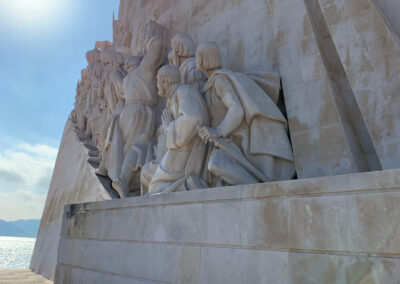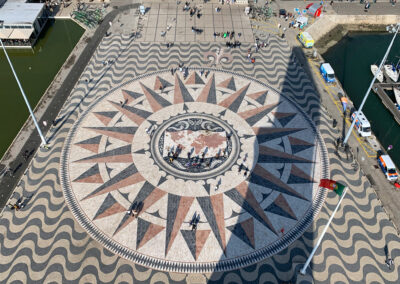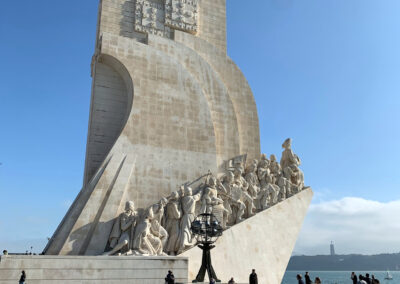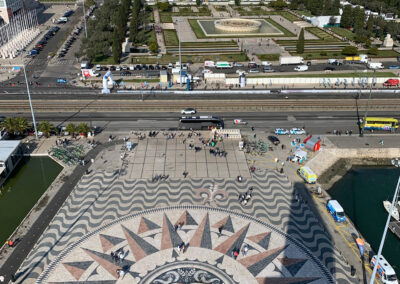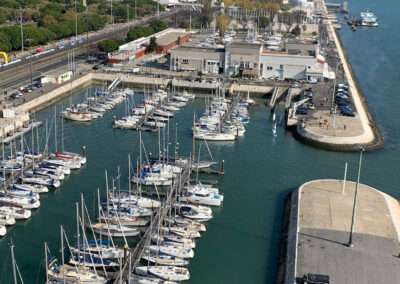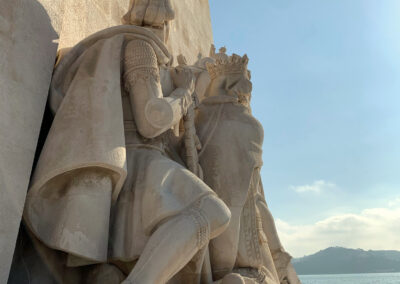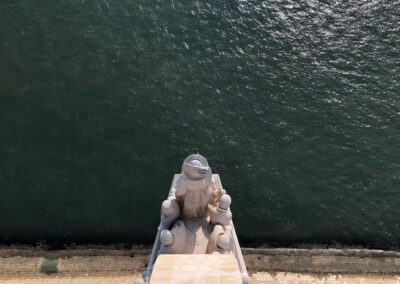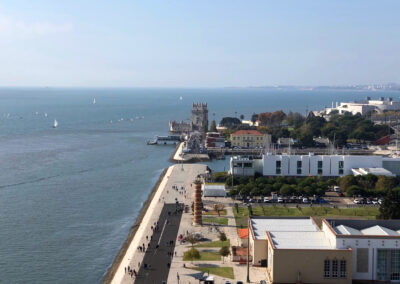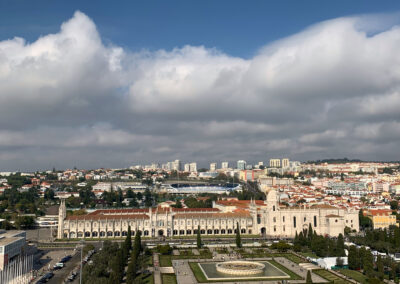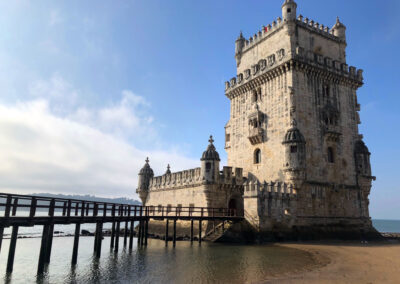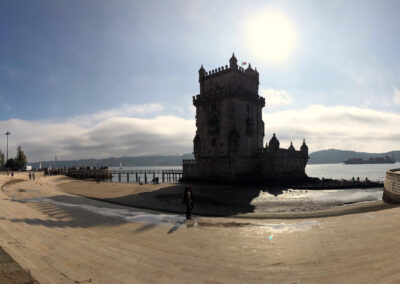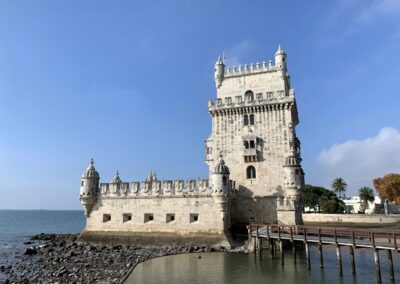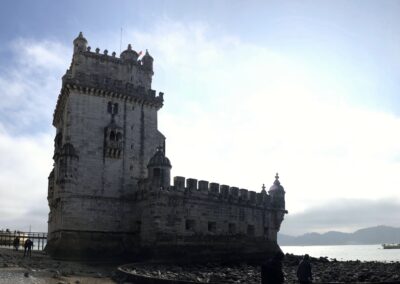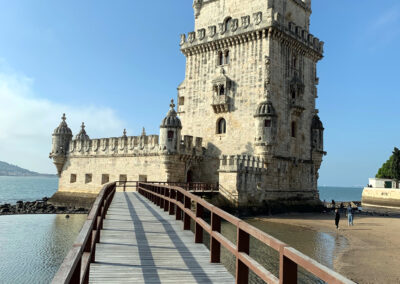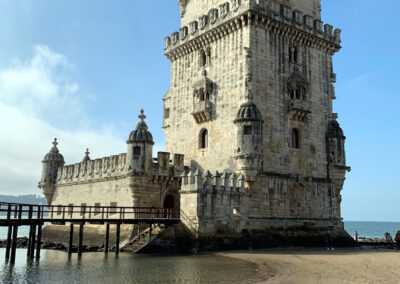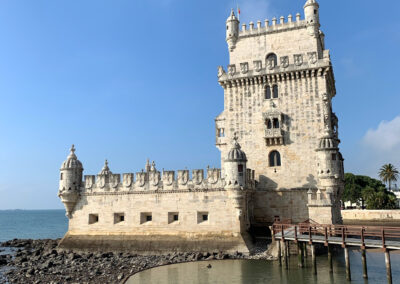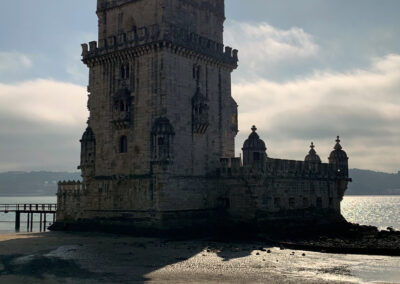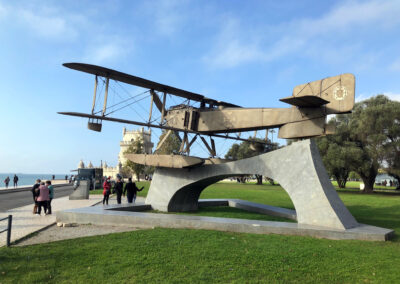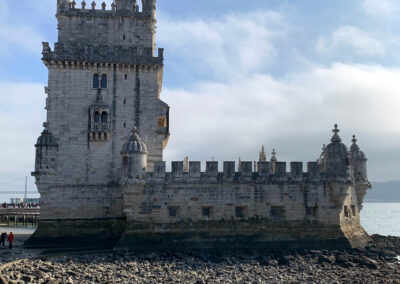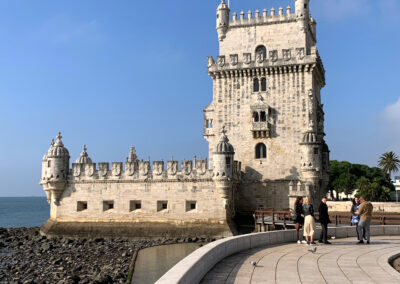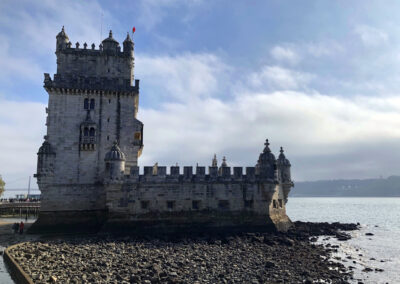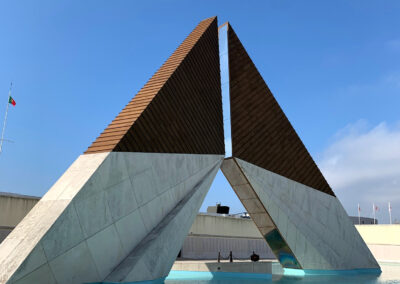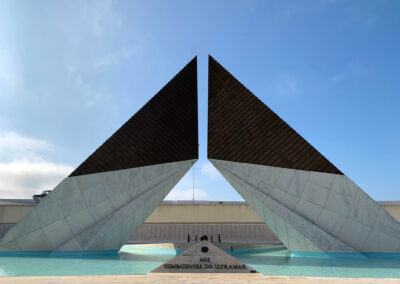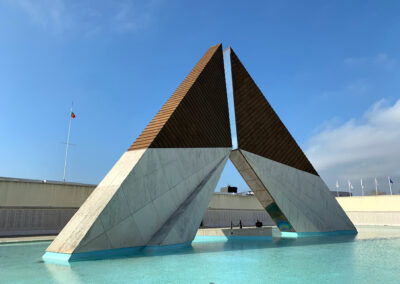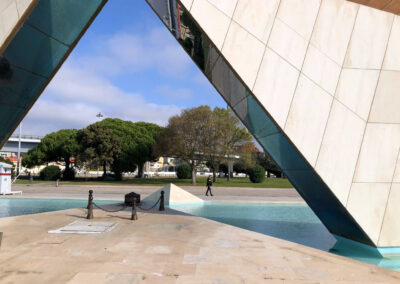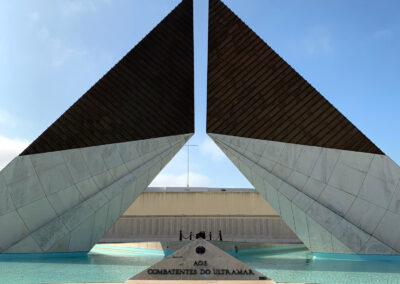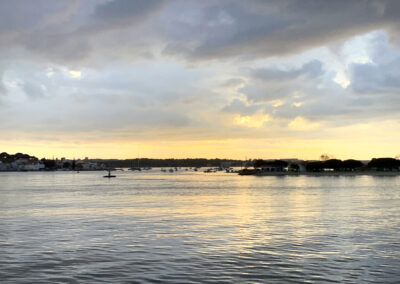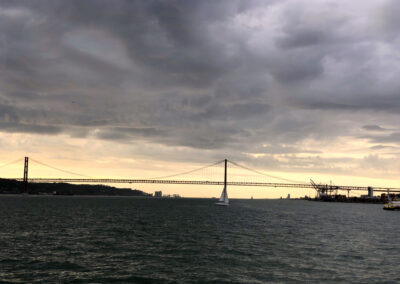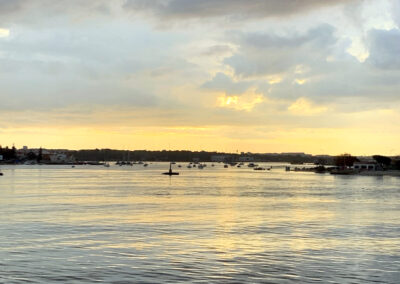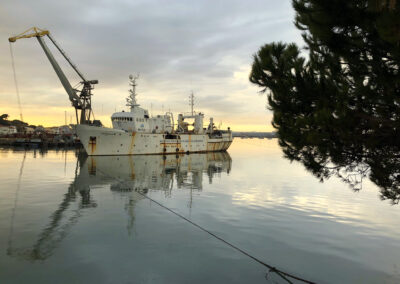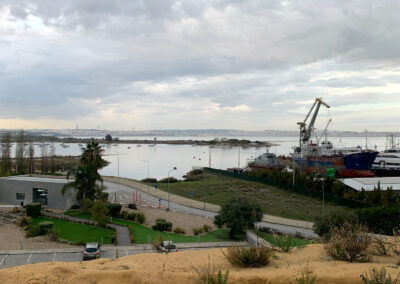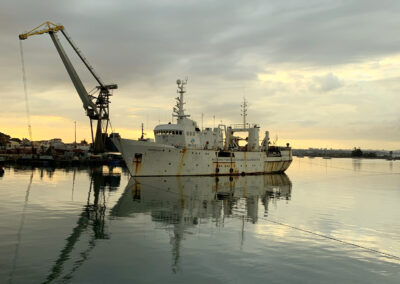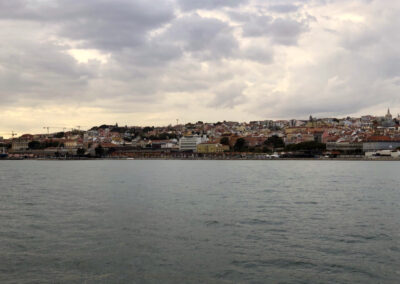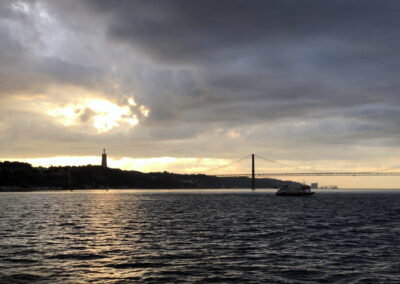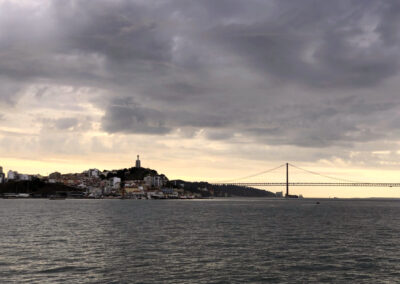Lisbon
Facts Lisbon
- Lisbon is the capital as well as the economic and financial center of Portugal. This also makes Lisbon the most westerly capital city in Europe.
- The city is located at the mouth of the River Tejo (Tagus) and is built on seven hills.
- It is known for its historic districts, monuments and viewpoints, including the Torre de Belém, the Mosteiro dos Jerónimos, the Castelo de São Jorge and the Miradouro da Senhora do Monte viewpoint.
- Opposite Lisbon, on the south bank of the River Tagus in Almada, stands the “Cristo Rei” , a monumental statue of Jesus Christ. With its outstretched arms, it resembles the “Cristo Redentor” in Rio de Janeiro, Brazil.
- Lisbon has a network of streetcars, buses and subway trains. The Humberto Delgado International Airport (IATA code: LIS) serves the city.
- The city is located in a seismically active region and has a long history of earthquakes, the most famous of which is the great earthquake of November 1, 1755.
- On August 25, 1988, a fire broke out that destroyed large parts of the city center.
- Lisbon is known for its rich cultural scene in the fields of music, art and literature. Fado, a traditional Portuguese music genre, originated here.
- Soccer is very popular in Portugal, and Lisbon is home to several well-known soccer clubs, including Benfica (Estádio da Luz – Estádio do Sport Lisboa e Benfica) and Sporting Lissabon (Estádio José Alvalade XXI) .
- Due to some similarities (including bridges, hills, streetcars), Lisbon is sometimes referred to as the “San Francisco of Europe”.
Each district of Lisbon has its own character and history. The most important are:
- Alfama – Lisbon’s oldest neighborhood, known for its narrow streets, historic buildings and the Castelo de São Jorge. Alfama is also famous for its traditional fado music.
- Baixa – The city center of Lisbon was rebuilt after the devastating earthquake of 1755. Here you will find wide boulevards, squares, stores and the Praça do Comércio.
- Bairro Alto – A lively district with many bars, restaurants, stores and art galleries. Bairro Alto is particularly known for its lively nightlife.
- Belém – This district is located to the west of the city center and is famous for its historical sights such as the Torre de Belém and the Mosteiro dos Jerónimos. Here you can also try the famous Pastéis de Belém.
- Chiado – An elegant district with boutiques, theaters and cafés. Chiado is a cultural center and a popular meeting place for art and literature lovers.
- Príncipe Real – An up-and-coming district with parks, markets and trendy stores. Known for its LGBT-friendly atmosphere.
- Areeiro – A residential area known for its classic architecture and green squares. Alameda Park is also located here .
- Parque das Nações – A modern district that was developed for Expo 98. Here you will find the Oceanário de Lisboa (Aquarium) , the Torre Vasco da Gama (Vasco da Gama Tower) and the Ponte Vasco da Gama (Vasco da Gama Bridge) . At almost 17.2 kilometers, it is one of the longest bridges in Europe.
Local food and drinks:
- Pastéis de Nata (Pastel de Nata): Delicious puff pastry tarts with custard cream filling, which were probably made by the monks of the Mosteiro dos Jerónimos in the Belém district before the 18th century and are therefore often referred to as Pastéis de Belém (Pastel de Belém).
- Ginjinha or Ginja: Sweet liqueur with 17-20 % alcohol, made from sour cherries. It has its origins in the bar and taproom that opened in 1840 “A Ginjinha” .
- Canned fish (Conservas de Peixe): Tinned fish from Portugal is a popular souvenir for tourists. In addition to the classic sardines in oil or tomato sauce, there are also many other types of fish such as tuna or mackerel. In Lisbon, the “Conserveira de Lisboa” , which has been family-owned since 1930, is the best place to buy the long-life cans locally.
Travel time Lisbon
| Jan | Feb | Mar | Apr | May | Jun | Jul | Aug | Sep | Oct | Nov | Dec |
| 8°-15° | 9°-16° | 10°-18° | 12°-20° | 14°-22° | 16°-25° | 18°-28° | 18°-28° | 17°-26° | 15°-23° | 12°-18° | 9°-15° |
For mild temperatures and fewer people, spring and fall are the ideal time to travel. For sunny weather, warm temperatures and when the crowds don’t bother you, summer is the best time to visit. For beach activities, winter should be avoided as the weather can be cooler and rainier.
Events Lisbon
- June 13: Dia Santo António de Lisboa (St. Anthony)
Praça do Comércio
Rua da Prata
Fado Vadio
Chão do Loureiro
Pátio de Dom Fradique
Castelo de São Jorge
Rua dos Cegos
Calçada da Amália
Miradouro das Portas do Sol
Teatro Romano
Miradouro de Santa Luzia
Sé de Lisboa
Praça Martim Moniz
Miradouro da Graça
Caracol da Graça
Igreja de São Domingos
Praça do Rossio
Elevador de Santa Justa
Convento do Carmo
Praça Luís de Camões
Street Art
Eléctricos de Lisboa
LX Factory
Mosteiro dos Jerónimos
Museu de Marinha
Praça do Império
Padrão dos Descobrimentos
Torre de Belém
Monumento aos Combatentes do Ultramar
Seixal
Praça do Comércio
2021
Sights & Facts
- The history of the square dates back to the Middle Ages. In 1755, however, the square was severely damaged by the great earthquake, the tsunami and the fire of Lisbon.
- Until the earthquake, the royal city palace Paço da Ribeira (Palace on the riverbank) stood here.
- In the middle of the square stands the bronze equestrian statue of King José I. by the sculptor Machado de Castro.
- The most striking feature of Praça do Comércio is the triumphal arch Arco da Rua Augusta at the northern end of the square.
- The square is surrounded by impressive buildings in uniform baroque architecture.
- The Praça do Comércio offers an impressive view of the River Tagus. A wide waterfront promenade invites you to take a stroll.
- The square is often used for events, markets and festivals. It is also a popular meeting place for locals and tourists. There are cafés, restaurants and stores in the surrounding buildings.
Rua da Prata
2021
Sights & Facts
- The Rua da Prata stretches through the Baixa district in the center of Lisbon and runs parallel to the famous Rua Augusta .
- It connects the Praça da Figueira with the Praça do Comércio.
- Many buildings in the Rua da Prata bear witness to Lisbon’s traditional architecture.
- There are a variety of restaurants and cafés along the street, offering both local and international specialties.
- Its central location makes it an ideal starting point for walks through the city center of Lisbon.
Fado Vadio
2021
Sights & Facts
- The street art depicts the infamous fado singer Maria Severa, who lived in Mouraria in the 19th century.
- According to the story, Maria and the Count of Vimoso fell in love in her parents’ tavern.
- However, this love was stopped by his aristocratic family and she died unhappily at the age of 26.
- The story of Maria Severa is the subject of several plays, films and musicals.
- The mural also features Fernando Maurício, another famous fadista.
- Like Maria Severa, many fado singers wear a silk scarf.
Chão do Loureiro
2021
Sights & Facts
Pátio de Dom Fradique
2021
Pátio de Dom Fradique or Portas do Castelo used to be the entrance to the Castelo de São Jorge.
Sights & Facts
- After the devastating earthquake of 1755, this part of the castle was not rebuilt.
- There are several murals by unknown artists in the ruins.
Castelo de São Jorge
2021
Sights & Facts
- The castle is surrounded by mighty walls with towers and battlements.
- Originally built by the Moors, the Castelo de São Jorge later served as the royal residence of Alfonso I (Alfonso the Conqueror).
- The great earthquake of 1755 destroyed large parts of the city, including the Torre do Tombo with the royal collection of documents. However, not all parts of the castle were rebuilt.
- From the walls of the Castelo de São Jorge you have an impressive panoramic view of Lisbon, the River Tagus and the surrounding area.
- The inner courtyard is also a frequent venue for cultural events.
Rua dos Cegos
2021
Rua dos Cegos in the Alfama district is home to one of the oldest houses in Lisbon.
Sights & Facts
- The listed house in Rua dos Cegos was built in the 16th century, more than 500 years ago.
- It survived the earthquake of 1755 thanks to its columns and location on the highest hill.
Calçada da Amália
2021
Pavement painting by street artist Alexandre Farto, also known as Vhils, in memory of the fado singer Amália Rodrigues.
Sights & Facts
- In 2015, Portuguese street artist Vhils created the face of fado singer Amália Rodrigues on the cobblestones.
- The work begins on the floor and then climbs up the wall. It is located in the Calçada do Menino de Deus in Alfama.
- According to the artist, Amália seems to cry when it rains. This reflects the feelings of fado.
Miradouro das Portas do Sol
2021
Sights & Facts
- The area is very popular with tourists who want to enjoy the beauty of the city.
- There is a statue of São Vicente (Saint Vincent) in the square . He is a patron saint of Lisbon and is often depicted in the city’s art and architecture.
- At the Miradouro das Portas do Sol there is also a stop for the famous streetcar 28E (Lg. Portas Sol) .
- There are several cozy cafés and restaurants in the vicinity of the Miradouro that invite you to take a break.
- Due to its elevated position, the Miradouro das Portas do Sol is also a popular spot for spectacular sunsets over Lisbon.
Teatro Romano
2021
The Teatro Romano in Lisbon is a Roman theater located in the historic district of Alfama on the southern hill of Castle Hill.
Sights & Facts
- The Teatro Romano is part of the Museu de Lisboa , a museum dedicated to Roman theaters.
- The theater, built under Emperor Augustus, dates from the 1st century and was probably used until the 2nd or 3rd century.
- The Teatro Romano is a reminder of the time of the Roman occupation when Lisbon was called “Felicitas Julia Olisipo” or “Olisipo” for short.
- It was buried until 1798 and is now an important archaeological site.
Miradouro de Santa Luzia
2021
Sights & Facts
- The viewpoint offers a beautiful view of the rooftops of Alfama, the River Tagus and the Pantheon, Igreja de Santa Engrácia .
- It is named after the nearby church Igreja de Santa Luzia .
- In between, on Praça Júlio de Castilho a beautiful garden with triplet flowers is cultivated.
- Both the stone wall of the viewpoint and the church are decorated with azulejos, Portuguese tiles.
Sé de Lisboa
2021
The Sé de Lisboa is Lisbon’s cathedral and one of the city’s most important religious sites.
Sights & Facts
- The cathedral is located on a hill in the Alfama district and has a long history dating back to the 12th century.
- The original structure of the Sé de Lisboa was rebuilt after the 1755 earthquake and has undergone various architectural additions and renovations over the centuries.
- The building features a mixture of different architectural styles, including Romanesque, Gothic and Baroque elements.
- In addition to the cloister and the tower, visitors can also visit the treasure museum, where liturgical objects, paintings and religious artifacts are on display.
Praça Martim Moniz
2021
Praça Martim Moniz is a square in Lisbon, Portugal, located in the Baixa district.
Sights & Facts
- Praça Martim Moniz is located in the heart of Lisbon, close to the Mouraria district and the Castelo de São Jorge.
- The square has a lively character and is known for its multicultural atmosphere.
- Martim Moniz is a symbol of Lisbon’s cultural diversity. It often hosts events and activities that celebrate the various cultural influences of the city’s inhabitants and visitors.
- There is a market hall on Praça Martim Moniz, the Mercado de Fusão . In this market hall there are various gastronomic offerings with international cuisine.
- There is also a stop for the famous streetcar 28E (Martim Moniz) .
Sights & Facts
- The Miradouro da Graça is located in the Graça district, a historic neighborhood on a hill in Lisbon.
- The terrace offers one of the most beautiful panoramic views of the city.
- Due to its elevated position, the Miradouro da Graça is a great place for breathtaking sunsets.
- Another viewpoint, the Miradouro da Senhora do Monte , is located nearby.
- The name “Senhora do Monte” stammt von der Capela de Nossa Senhora do Monte (Chapel of Our Lady of the Mountain) , which is located there.
- The surroundings of the two viewpoints in the Graça district are charming and authentic. Small alleyways, traditional stores and cafés invite you to explore.
- In Rua da Graça there is also a stop for the famous streetcar 28E (Graça) .
Caracol da Graça
2021
The Caracol da Graça is a long staircase that leads to the Miradouro da Graça. There is a lot of street art on the high side walls.
Igreja de São Domingos
2021
The Igreja de São Domingos, also known as the Igreja de São Domingos de Lisboa, is a historic church in the Baixa district.
Sights & Facts
- The original church dates back to the 13th century, but the current structure has been renovated and rebuilt several times over the centuries.
- The Igreja de São Domingos features a mixture of different architectural styles, including Gothic, Baroque and Mannerist elements.
- Like many historic buildings in Lisbon, the Igreja de São Domingos was severely damaged by the 1755 earthquake. Although the church was rebuilt afterwards, the scars of this event are still visible.
Praça do Rossio
2021
Sights & Facts
- The square was named after Dom Pedro IV, a Portuguese king of the 19th century.
- It has a long history and has always been an important meeting place for the people of Lisbon.
- In the middle of the square stands the monument to Dom Pedro IV, an imposing obelisk with a height of 28 meters. It was built in 1870 and is surrounded by statues and fountains.
- The surrounding area is characterized by impressive architecture. Including the Teatro Nacional Dona Maria II (National Theater Dona Maria II) on the north side of the square.
- The floor of the Rossio is paved with “Calçada Portuguesa”, a traditional Portuguese mosaic pattern of black and white stones.
- It was paved by convicts from the Castelo de São Jorge from 1849.
- The wave pattern symbolizes the meeting of two bodies of water: The Tagus and the Atlantic. It also serves as a design template for other squares, e.g. the Copacabana in Rio de Janeiro, Brazil.
Elevador de Santa Justa
2021
Sights & Facts
- The elevator is located in the Baixa district and connects the lower city with the higher Chiado district.
- It is in the neo-Gothic style and is reminiscent of the Eiffel Tower in Paris. The architect of the elevator, Raoul Mesnier du Ponsard, was a student of Gustave Eiffel.
- The structure is mainly made of iron and decorated cast iron. The elegant decorations and arches contribute to its unique aesthetic.
- Construction of the Elevador de Santa Justa began in 1900 and was completed in 1902. Originally operated as a steam elevator, it was later converted to electric operation.
- It not only serves as a means of transportation between the city districts, but also offers a viewing platform on the top level.
- The elevator is part of Lisbon’s public transport system and can be used with a normal streetcar or metro ticket.
Convento do Carmo
2021
Sights & Facts
- The Gothic monastery was founded in the 14th century by Nuno Álvares Pereira, a Portuguese national hero, and dedicated to the Carmelite monks.
- The monastery was severely damaged in the great earthquake of 1755.
- The unfinished Gothic façade and the missing roofs give visitors an impression of the destruction caused by the earthquake.
- The hill on which the Convento do Carmo is located also offers a good view of parts of Lisbon.
Sights & Facts
- Praça Luís de Camões is named after the famous Portuguese poet Luís de Camões. He is one of the most important poets in Portuguese literary history and is best known for his epic poem “Os Lusíadas”.
- On the square is a monument by Victor Bastos in honor of Luís de Camões. It shows the poet on a pedestal, surrounded by allegorical figures.
- Praça Luís de Camões is surrounded by stores, cafés and restaurants and is close to cultural institutions such as the Teatro Nacional de São Carlos (Opera House) und dem Museu Nacional de Arte Contemporânea – MNAC (National Museum of Contemporary Art) .
- The square is an important connection point between Chiado and Bairro Alto, two lively districts of Lisbon.
- Praça Luís de Camões is a popular meeting point and place to relax and watch the hustle and bustle of the surrounding area.
Street Art
2021
Sights & Facts
- Alfama:
- Mural on the wall of a house in Largo Archada
- Graffiti in the parking garage Chão do Loureiro
- Calçada da Amália by Portuguese street artist Alexandre Farto aka. Vhils
- Graça:
- Fado Tropical em tons RGB from OzeArv from Lisbon
- Graffiti commemorating the “Carnation Revolution” by American artist Shepard Fairey aka. Obey
- Joint work by Obey and Vhils
- Wall paintings in Caracol da Graça
- Street art on a house wall by Portuguese artist Diogo Machado aka. ADD/FUEL
- Mouraria:
Other street arts can also be found in Bairro Alto , Marvila , near the Amoreiras shopping center , in the LX Factory and in Vila Franca de Xira north of Lisbon.
Eléctricos de Lisboa
2021
Sights & Facts
- There are different types of streetcars in Lisbon. The best known are the historic yellow “Remodelado” streetcars.
- Some of them date back to the 1930s and drive through the narrow streets and over the hills of the city. But there are also more modern low-floor streetcars.
- Streetcar no. 28 is particularly popular with tourists, as it runs through the districts of Graça, Alfama, Baixa and Campo de Ourique, passing sights such as the Castelo de São Jorge, the Sé de Lisboa and the Bairro Alto.
- It can be very crowded, especially during rush hours and in the high season. It is important to watch out for pickpockets, especially when the streetcars are full.
- There are 3 funicular railroads (Ascensores de Lisboa) that go up and down the steep hills of Lisbon: Elevador da Bica (Largo do Calhariz – Rua de São Paulo ), Ascensor do Lavra (Rua São José – Rua Câmara Pestana ) and Ascensor da Glória (Praça dos Restauradores – São Pedro de Alcântara ).
- Many visitors use the historic streetcars as a kind of “rolling sightseeing” to explore Lisbon’s narrow streets, steep hills and picturesque neighborhoods.
- The frequency of the streetcars varies depending on the line and time of day. There may be short waiting times on busy routes. The operating times generally extend from early in the morning to late in the evening, but it is advisable to check the exact timetables.
- A variety of tickets, including day tickets, are accepted.
- Public transportation in Lisbon is operated by Carris (Companhia dos Carris de Ferro de Lisboa) and Metro (Metropolitano de Lisboa) .
LX Factory
2021
Sights & Facts
- The LX Factory is located under the Ponte 25 de Abril (April 25th Bridge) in Alcântara. The bridge connects the two banks of the River Tagus.
- It has its origins in an old textile factory that was founded at the end of the 19th century. In recent years, the site has been revitalized and transformed into a lively and creative space.
- The LX Factory is home to numerous creative and cultural facilities, including art galleries, design studios, offices for creative professionals, concept stores, restaurants, cafés and bars.
- The walls and facades of the buildings in the LX Factory are often decorated with impressive works of street art and graffiti. The street art scene contributes to the lively atmosphere of the district.
- Various cultural events, workshops, concerts and festivals take place at the LX Factory. This is where artists, creative people and the community meet.
- There are several stores offering a wide range of products, including handicrafts, fashion, books and design items.
- The LX Factory also offers a diverse selection of restaurants and cafés. The gastronomic establishments are often innovative and creative, and visitors can experience a wide range of culinary delights.
Mosteiro dos Jerónimos
2021
Sights & Facts
- Construction of the monastery began in 1501 and took several decades. It was built by order of King Manuel I in gratitude for Portugal’s wealth and success in the Age of Discovery.
- The Mosteiro dos Jerónimos represents Manueline architecture, a specific style of late Gothic architecture named after King Manuel I. The style is characterized by rich ornaments, maritime symbols, carvings with plant motifs and details from nature.
- The main portal, also known as the south portal, is particularly impressive and rich in detail. It shows biblical scenes, figures of saints and Portuguese explorers.
- The interior of the monastery is just as magnificent as the façade. The nave has an impressive length and the chapels are decorated with ornate lattices.
- The Panteão Real (Royal Crypt), where several members of the Portuguese royal family are buried, including King Manuel I and Queen Maria I, is located in St. Jerome’s Monastery. The famous Portuguese navigator Vasco da Gama is also buried here.
- Part of the monastery now houses the Museu de Marinha (Maritime Museum), which presents Portugal’s maritime history.
- The Mosteiro dos Jerónimos was declared a UNESCO World Heritage Site in 1983. It is part of the historic center of Belém, which also includes the Torre de Belém and the Padrão dos Descobrimentos.
- Pastéis de Belém (Pastel de Belém) originated in the Antiga Confeitaria de Belém, a bakery (Fábrica dos Pastéis de Belém) near the Mosteiro dos Jerónimos.
Museu de Marinha
2021
The Museu de Marinha (Maritime Museum) is a museum in Belém dedicated to the history of the Portuguese navy.
Sights & Facts
- Founded in 1863, the museum has its origins in the royal model collection that King Ludwig I of Bavaria gave to his wife, Queen Maria II of Portugal.
- Over the years, the collection was expanded and the museum developed into an important maritime history museum.
- The Museu de Marinha displays a wide range of exhibits that illustrate the history of the Portuguese navy from its beginnings to the present day.
- The exhibits include ship models, maritime artifacts, navigation instruments, paintings and other historical objects.
- The museum places particular emphasis on the glorious past of the Portuguese explorers and their role in the Age of Discovery. It also sheds light on the development of the Portuguese navy over the centuries.
- It works closely with the nearby Museu Nacional de Arqueologia (National Museum of Archaeology) .
- The Museu de Marinha regularly organizes events, lectures and activities to promote interest in maritime history.
Praça do Império
2021
Sights & Facts
- The Praça do Império was created as part of the 1940 World Exhibition (Exposição do Mundo Português), which aimed to showcase Portuguese history and culture.
- The square is surrounded by extensive gardens and avenues that invite you to take relaxing walks.
- The outstanding monument of the Praça do Império is the Padrão dos Descobrimentos, also known as the Monument to the Discoverers.
- In the middle of the square is a large rectangular pond, which contributes to a peaceful atmosphere and reflects the monument to the explorers.
- The Praça do Império is also home to the Museu Nacional de Arqueologia (National Museum of Archaeology) , which specializes in Portuguese archaeology.
- The Monumento aos Combatentes do Ultramar is located on the south side of the square.
Padrão dos Descobrimentos
2021
Sights & Facts
- The monument was erected in 1960 to mark the 500th anniversary of the death of Henry the Navigator (Infante Dom Henrique).
- Originally built as a temporary structure for the World Exhibition (Exposição do Mundo Português), it was later made permanent due to its popularity and cultural significance.
- The Padrão dos Descobrimentos has the shape of a ship’s beak and is around 52 meters high. At the top of the monument is a huge cross symbolizing the Portuguese Age of Discovery.
- The sides of the monument are decorated with sculptures of important personalities from the Age of Discovery. They present Portuguese explorers, cartographers, writers and other important personalities of the 15th and 16th century. The figure of Henry the Navigator stands at the top of the monument.
- Visitors to the Padrão dos Descobrimentos have an impressive view of the Tagus River and the surrounding sights from the viewing platform at the top.
- The interior of the monument is designed as an exhibition space and houses a permanent exhibition on the Age of Discovery and the history of Portuguese exploration.
- In front of the Padrão dos Descobrimentos is a giant wind rose compass (Rosa dos Ventos) embedded into the ground. In the center of the compass rose is a large globe on which the routes of the explorers are marked.
Torre de Belém
2021
Sights & Facts
- The Torre de Belém stands on the banks of the Tagus in the Belém district.
- Construction of the tower began in 1514 under King Manuel I as part of the defense system for the entrance to the port of Lisbon.
- It was completed in 1521 and served both as a defensive structure and as a representative symbol of Portugal’s power and wealth in the Age of Discovery.
- The Torre de Belém is an example of Manueline architecture, a specific style of late Gothic architecture named after King Manuel I. The tower has four storeys and is richly decorated with geometric patterns, reliefs and maritime symbols.
- Originally, the tower served as a fortress and customs station to secure the harbor entrance. Over the centuries, it has also been used as a prison and a lookout point.
- Today, the Torre de Belém houses parts of the Museu de Marinha, which presents Portugal’s maritime history.
- The Torre de Belém was declared a UNESCO World Heritage Site in 1983 along with other sights in Belém.
- Visitors can enter the tower and explore the different floors, including the viewing platform on the roof, which offers a spectacular view of the Tagus River and the surrounding sights.
Monumento aos Combatentes do Ultramar
2021
Sights & Facts
- The monument was inaugurated on November 11, 2009 and is dedicated to the Portuguese soldiers who took part in military conflicts in Portugal’s former overseas provinces, particularly in Africa, during the colonial wars (Ultramar Wars).
- The Monumento aos Combatentes do Ultramar consists of various elements, including a sculpture of soldiers, walls with inscriptions bearing the names of those who died in the wars and a water basin.
- The monument commemorates the victims and the involvement of the Portuguese armed forces in the colonial wars that took place in Portugal’s overseas provinces between the 1960s and 1970s. These wars took place in Angola, Mozambique, Guinea-Bissau, Cape Verde and East Timor.
- November 11 is known in Portugal as “Dia do Armistício” (Armistice Day), on which those who have died in wars and armed conflicts are commemorated.
- Visitors can visit the Monumento aos Combatentes do Ultramar to understand the history of Portugal’s involvement in the overseas wars and commemorate the fallen soldiers.
Seixal
2021
Seixal is a town and municipality in Portugal in the Lisbon metropolitan area. It is located on the south bank of the River Tagus, opposite Lisbon.
Sights & Facts
- The history of Seixal goes back a long way and the town has historical links to fishing and shipbuilding. In the past, Seixal was an important center for maritime activities.
- The economy of Seixal has changed over time. In the past, fishing and shipbuilding were of great importance, but today other industries and services play an important role in the local economy.
- Seixal has a rich cultural scene and offers various leisure activities. The city regularly hosts cultural events, concerts and festivals. Parks, promenades and sports facilities are available to residents and visitors.
- Seixal’s tourist attractions include historical sites, churches and cultural institutions. The promenade along the Tagus offers a picturesque backdrop.
- Seixal has good transport connections. There are road connections to Lisbon and the surrounding towns. Ferries connect Seixal with Lisbon and public transport links the city with other parts of the region.
